THE METAL ARTS OF AFRICA







Collectors often overlook the beauty and artistry of African metalwork; however, several recent museum exhibitions and books have piqued their curiosity and generated a resurgence of interest. Foremost among these is the recent publication West African Bronze Masterworks: The Syrop Collection. Eagerly awaited by collectors, scholars, and enthusiasts, the book illustrates Syrop’s bronze pieces, most of which have never been published, collected during more than 40 years of passionate and untiring research. An architect by profession and a collector by instinct, Arnold Syrop was a pioneer for his interest in this area of African material culture.

Published in 2020, L’art du métal en Afrique de l’Ouest illustrates the collection of another passionate collector, this time the European collection of Dr. Pierluigi Peroni. Dr. Peroni selected approximately 280 small metal objects (copper alloys, bronze, aluminum, gold, etc.) from his collection, including pendants, protective amulets, bracelets, rings and weights for weighing gold.
Another exceptional recent publication is Striking Iron: The Art of African Blacksmiths. This landmark traveling show was curated by the renowned Santa Fe sculptor Tom Joyce. The show combined interdisciplinary scholarship

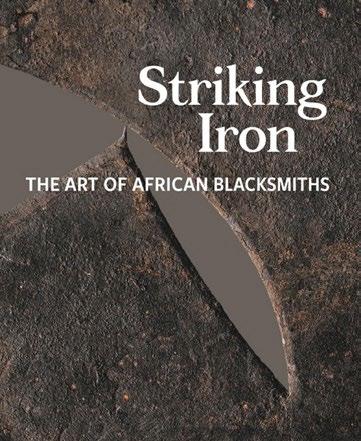
with vivid illustrations to offer the most comprehensive treatment of the blacksmith’s art in sub-Saharan Africa to date. The show featured tools, blades, currencies, wood sculptures studded with iron, musical instruments, and accouterments. Seventeen contributors wrote from the disciplinary perspectives of art history, art, anthropology, archaeology, history, and astronomy, examining how the blacksmiths’ virtuosity can harness powers of the natural and spiritual worlds, effect change and ensure protection, assist with life’s challenges and transitions, and enhance the efficacies of sacred acts. The show was exhibited at the Smithsonian Institution’s National Museum of African Art, Washington, DC, the Musée du quai Branly – Jacques Chirac, Paris, and the Fowler Museum, Los Angeles.
The history of metalwork in Africa is a testament to the continent’s rich cultural diversity, technical ingenuity and artistic creativity. For thousands of years, Africans have been crafting intricate and functional metal objects, shaping their societies, and leaving behind a legacy of remarkable craftsmanship.
The origins of metalwork in Africa can be traced back to the African Iron Age, which began around 2000 bce and saw the emergence of iron smelting and blacksmithing techniques across the continent. The development of ironworking was a pivotal moment in Africa’s history, as it marked the transition from the Stone Age to the Iron Age, ushering in significant changes in agriculture, weaponry, and artistry.
Africans developed various ironworking techniques over the centuries, including the use of bloomeries and later, blast furnaces. These techniques allowed for the extraction of iron ore and the creation of a wide range of tools and objects, such as farming implements, weapons, and jewelry. Blacksmiths played a crucial role in their communities by producing essential items for daily life.
The artistic expression of metalwork in Africa is noteworthy and diverse, reflecting the cultural richness of the continent. One of the most famous examples is the intricate bronze sculptures of the Kingdom of Benin, in present-day Nigeria, which date back to the 13th century. These bronze sculptures, created using the lost-wax casting technique, depict royalty, warriors, and mythical beings, serving as both art and historical records of the kingdom’s social and political structure.
Beyond artistry, metalwork in Africa has played a critical role in shaping daily life. African blacksmiths and metalworkers produced an array of practical items, including agricultural tools, cooking utensils, and weapons. These objects not only contributed to the survival of African societies but also facilitated trade and economic development, as surplus metal products were exchanged with neighboring communities.
Africa’s metalwork traditions also had a significant impact on global trade. The trans-Saharan trade routes allowed African metalwork to be traded across North Africa and the Middle East, influencing the artistic styles and techniques of distant regions. African gold, mined and fashioned into jewelry and ornaments, became highly sought after and contributed to the continent’s reputation as the ‘Gold Coast.’
During the colonial era, African metalwork faced significant challenges, as European powers often suppressed local industries in favor of their economic interests. Despite these obstacles, many African metalworkers continued to practice their craft, adapting to new technologies and materials.
The Ashanti people in Ghana on the west coast of Africa have been mining and working with gold for centuries. Gold was abundant in the region, and it played a vital role
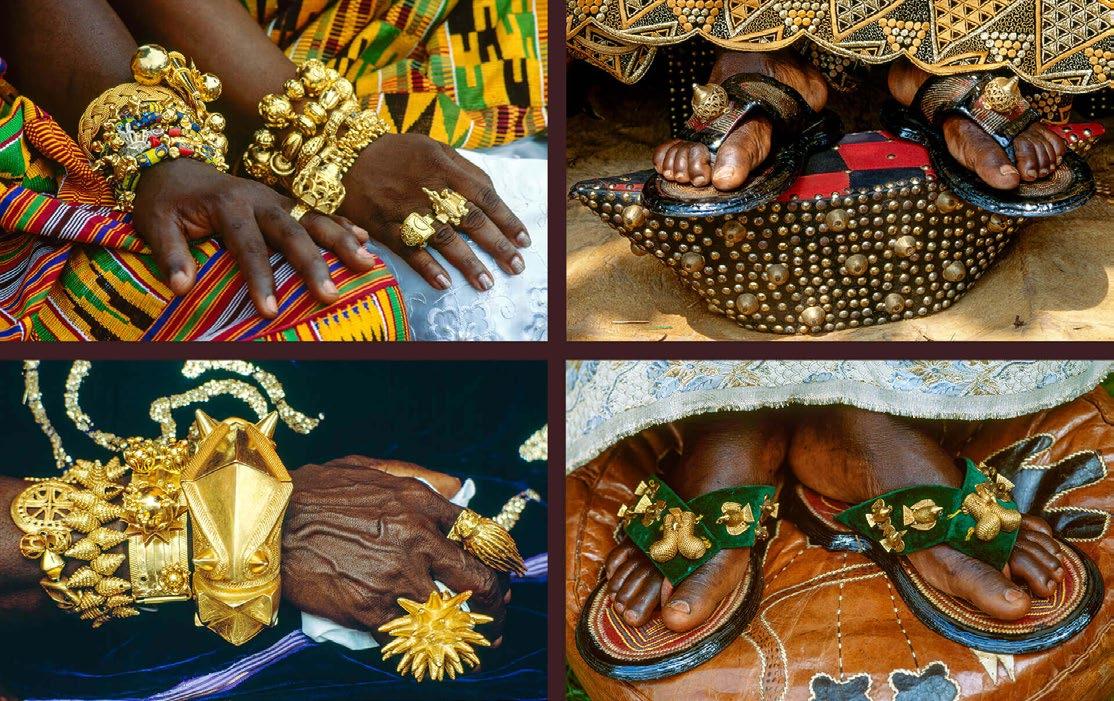
in trade and craftsmanship. The Ashanti Kingdom, which reached its height in the 18th century, was famous for its gold resources.
Gold held deep symbolic meaning for the Ashanti. It was associated with power, wealth, and prestige. Gold jewelry was not only worn for adornment but also as a symbol of social status and rank. Members of the Ashanti royal family, especially the Asantehene (king), adorned themselves with elaborate gold ornaments as a sign of their authority.
Ashanti gold jewelry is known for its intricate craftsmanship. Skilled artisans, often working within specialized guilds, created exquisite pieces using techniques like casting, filigree, and repoussé. These techniques allowed
for the creation of detailed and finely textured designs.
Ashanti gold jewelry often featured symbolic motifs. Common symbols included animals, geometric patterns, and abstract representations of concepts like unity and balance. These symbols conveyed cultural, spiritual, and historical meanings.
Gold jewelry was worn on various occasions, including weddings, festivals, and funerals. The Ashanti people believed that wearing gold ornaments could provide protection and spiritual blessings. Jewelry also played a role in important rituals and ceremonies. See item 16 for an example of a bracelet worn by royalty.
During the colonial period, European powers like the
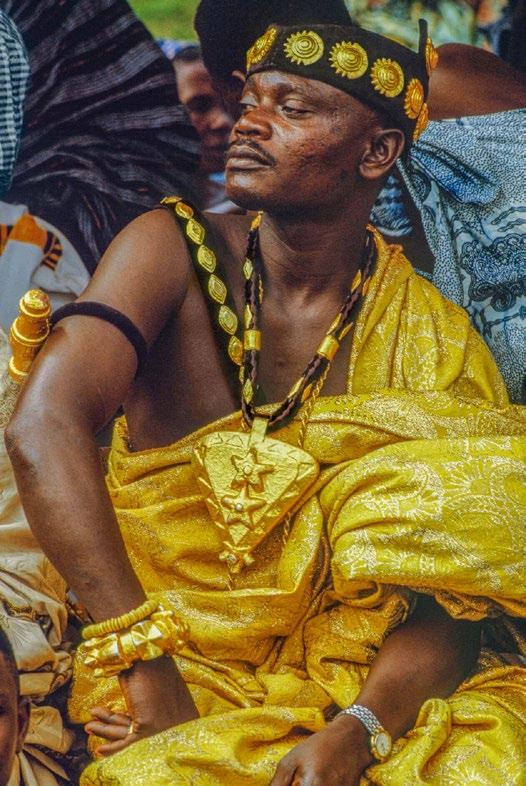
specific weight value. These weights were often in the shape of various objects, animals, or symbols, and their size and shape corresponded to the specific weight they represented.
Many of these goldweights had symbolic or cultural significance to the Ashanti people. They often depicted elements of Ashanti culture, history, and spirituality, making them not just utilitarian but also important cultural artifacts.
Owning a collection of finely crafted goldweights was a symbol of wealth and status among the Ashanti elite. These weights were often made from valuable materials like brass or bronze and were sometimes passed down as family heirlooms. Goldweights also had ritual and religious importance. They were sometimes used in ceremonies, offerings, and other cultural and spiritual practices.
Creating intricate and aesthetically pleasing goldweights was seen as an art form among the Ashanti people. Skilled craftsmen were responsible for designing and creating these weights, showcasing their craftsmanship and creativity.
While gold was the primary commodity measured using these weights, they were also used for other valuable commodities, such as kola nuts and spices, further emphasizing their versatility in trade.
British sought to control the gold resources of the Ashanti Kingdom. This had a significant impact on the gold trade and traditional craftsmanship. However, Ashanti gold jewelry continued to be produced and valued within the community. Goldweights were initially designed to measure gold dust, which was a common medium of exchange in Ashanti society. Each weight represented a specific unit of measurement for gold, allowing traders to accurately determine the value of the gold being exchanged. Goldweights were standardized, with each weight having a
Stylistic studies of goldweights provide relative dates into a broad Early and Late period. The Early period is thought to have been from about 1400–1720 ad, with some overlap with the Late period, 1700–1900 ad. There is a distinct difference between the Early and Late periods. Geometric weights are the oldest forms, dating from 1400 ad onwards while figurative weights, those made in the image of people, animals, buildings, etc., first appeared around 1600 ad. For three early figurative goldweights dating from circa 16001720, see items 5, 6 and 7 in this catalog.
The Toussian people, also referred to as the Win, Tusyan, or Tussian, are an ethnic group primarily found in Burkina
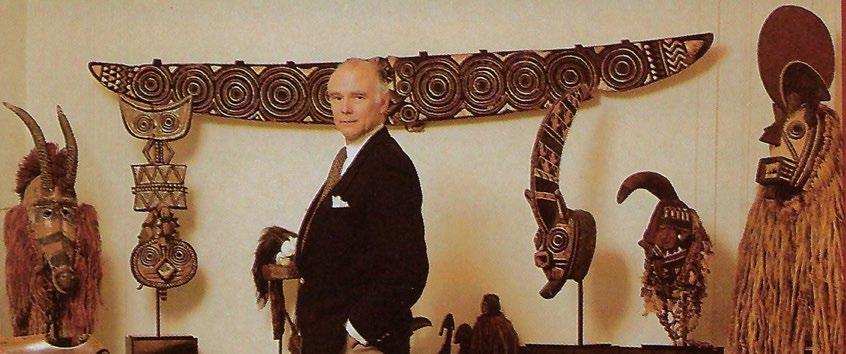
Faso, specifically in the southwestern part of the country. They are known for their distinctive cultural practices, languages, and traditional lifestyles that are closely tied to their environment and history.
The Toussians have a rich cultural heritage that includes unique architectural styles, such as fortress-like houses made from mud and wood, designed to protect against invaders and wild animals. These structures are notable for their aesthetic and practical significance, reflecting the community’s historical need for defense and its relationship with the natural environment.
Their society is traditionally organized around clans and age groups, with a strong emphasis on communal living and cooperation. The Toussian people speak the Toussian language, which belongs to the Niger-Congo language family, indicating a deep-rooted history and connection to the wider West African cultural and linguistic landscapes.
Religiously and spiritually, the Toussians, like many ethnic groups in Burkina Faso and West Africa, practice a combination of traditional beliefs that include ancestor worship and the veneration of nature spirits, alongside Islam
and Christianity, which have also influenced the region.
In Toussian society, a bronze couple pendant holds specific symbolism and cultural significance. A couple often symbolizes the unity and harmony between a husband and wife. It is a representation of the ideal marital relationship, emphasizing the importance of mutual respect, cooperation, and support between spouses. A couple can also be seen as a symbol of fertility and the desire for a prosperous and growing family. It is often worn by married individuals as a sign of their commitment to building a strong and flourishing family unit.
Like many figurative pendants, the pendant may also offer protection to the wearers. It can serve as an amulet that wards off negative energies, evil spirits, and harm, not only for the couple but also for their family. Lastly, the pendant can also be a mark of cultural identity. It distinguishes them as members of their specific ethnic group and reflects their cultural heritage. It is a visual representation of their values and traditions related to marriage and family life.
The exceptional pendant on offer (see item 2), and certainly one of the finest to ever come to the market, is from the collection of Thomas G.B. Wheelock and is
published in Land of the Flying Masks: Art & Culture in Burkina Faso, the Thomas G.B. Wheellock Collection.
Southern Nigeria has a long and rich history of producing alloy cast works, such as those of the 9th-century burial goods of Igbo-Ukwu, the busts from 13th-century Ife, and the heads and plaques from the early 16th century from Benin City. Much scholarship has been devoted to these centers and yet there are other, perhaps even more historically important, works that have barely been acknowledged. The label ‘Lower Niger Bronzes’ was proposed in the 1960s by William Fagg to account for those few pieces which did not fit with the three well-known centers’ works.
The quality and composition of these works indicate that most were likely cast before the European coastal trade in Nigeria which dates from the late 15th century. Leopard skull replicas, humanoid bell heads, small hippos, scepter
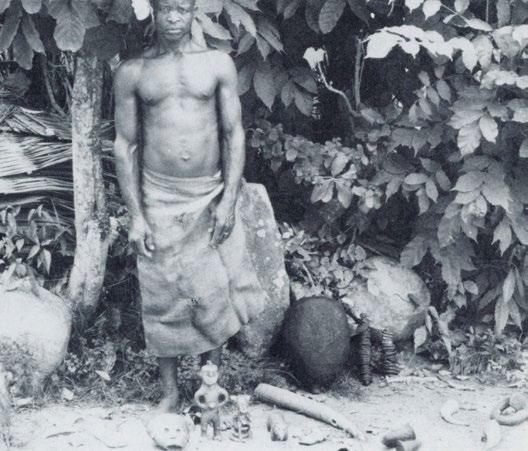
heads, and masks make up only a portion of the works now under study. Without their original cultural contexts, these artifacts are somewhat mysterious, yet with careful study of their compositions and forms, much is revealed of a period of southern Nigerian history that predates the current arrangement of ethnic groups.
The earliest known carbon-dating for a Cross River bronze is mid-17th century and the example illustrated in this catalog (see item 1) likely dates to the early to mid19th century. It is believed that these bronzes were cast by itinerant Igbo blacksmiths. Writing in 1905 on Cross River Natives, Charles Partridge refers to blacksmiths melting the brass rods of currency and other odds and ends to fashion into personal ornaments and other objects.
These anthropomorphic and zoomorphic figures were kept in shrines and represented ancestors, spirits or specific deities that were being honored in the shrine.
When Portuguese explorers first arrived at the mouth of the Zaire River in 1483, the Kongo kingdom was thriving and prosperous, with extensive commercial networks between the coast, interior and equatorial forests to the north. Portugal and Kongo soon established a strong trading partnership. In addition to material goods, the Portuguese also brought Christianity, which was rapidly adopted by Kongo rulers and established as the state religion in the early sixteenth century by King Afonso Mvemba a Nzinga. The adoption of Christianity allowed Kongo kings to foster international alliances not only with Portuguese leaders but also with the Vatican. In response to their new faith, Kongo craftsmen began to introduce Christian iconography into their artistic repertoire.
Although the general depiction of the central Christ figure with arms extended follows Western conventions, the features of the face are African. Western forms like

the crucifix resonated profoundly with preexisting Kongo religious practices. In Kongo belief, the cross was already regarded as a powerful emblem of spirituality and a metaphor for the cosmos. An icon of a cross within a circle, referred to as the Four Moments of the Sun, represents the four parts of the day (dawn, noon, dusk, and night) that symbolize more broadly the cyclical journey of life.
Kongo kings, having adopted Christianity as the state religion, commissioned locally made crucifixes for use as emblems of leadership and power. These crucifixes were cast with copper alloys. The use of copper, a valued import from Europe, reinforced the association with wealth and power. Although Christianity was eventually rejected by the Kongo in the seventeenth century, such works continued to be made as symbols of indigenous cosmological concepts. The example illustrated (see item 25 of this catalog), at just 5½ inches tall is an unusually fine and small example and is particularly sensitively rendered.
While European missionaries may have initially introduced the concept of crucifixes to the Congolese people, the local craftsmanship and adaptation of these religious artifacts have made them a distinct and integral part of Congolese culture and spirituality. Today, metal crucifixes continue to be crafted and used in various
Watercolor by Capuchin friar Bernardino D’Asti, depicting a Christian wedding ceremony in the kingdom of Kongo, circa 1750.
religious and cultural contexts throughout the Democratic Republic of Congo and other parts of the region.
Today, African metalwork continues to thrive; artisans blend traditional techniques with modern influences. African artists and blacksmiths create contemporary sculptures, jewelry, and functional objects that reflect both their heritage and their engagement with global art and design trends.
The history of metalwork in Africa is a testament to the continent’s enduring creativity, innovation, and resilience. From the ancient origins of ironworking to the rich artistic expressions and utilitarian contributions, African metalwork has left an indelible mark on the continent’s history and culture. It serves as a reminder of Africa’s rich heritage and its ongoing contributions to the world of art and craftsmanship.
We hope you will enjoy our selection of Metal Arts of Africa.
Dori & Daniel Rootenberg new york city, february 2024

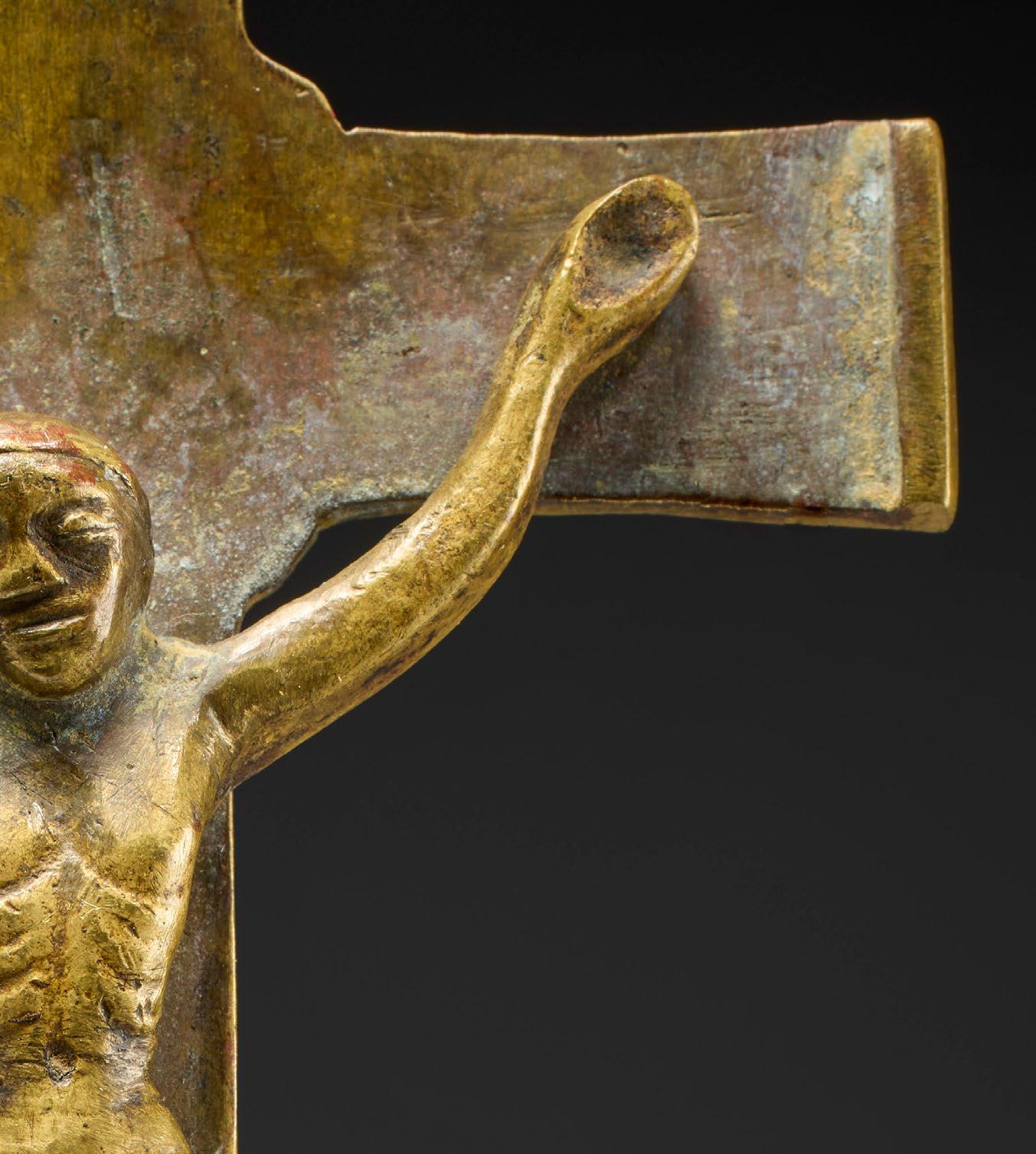

Mid-19th century
Copper alloy
Height: 8 in, 20 cm
PROVENANCE
Merton Simpson (1928–2013), New York
Barry Hecht Collection, Maryland
PUBLICATION HISTORY
‘The Art of Metal in Africa’, Brincard (Marie-Thérèse), New York:
The African-American Institute, 1982:126, #H 20
EXHIBITION HISTORY
‘The Art of Metal in Africa’:
– New York, NY: The African–American Institute, 7 October 1982–5
January 1983
– Houston, TX: Institute for the Arts, 3 February–10 April, 1983
– Santa Ana, CA: Charles W. Bowers Museum, 18 June–5 September, 1983

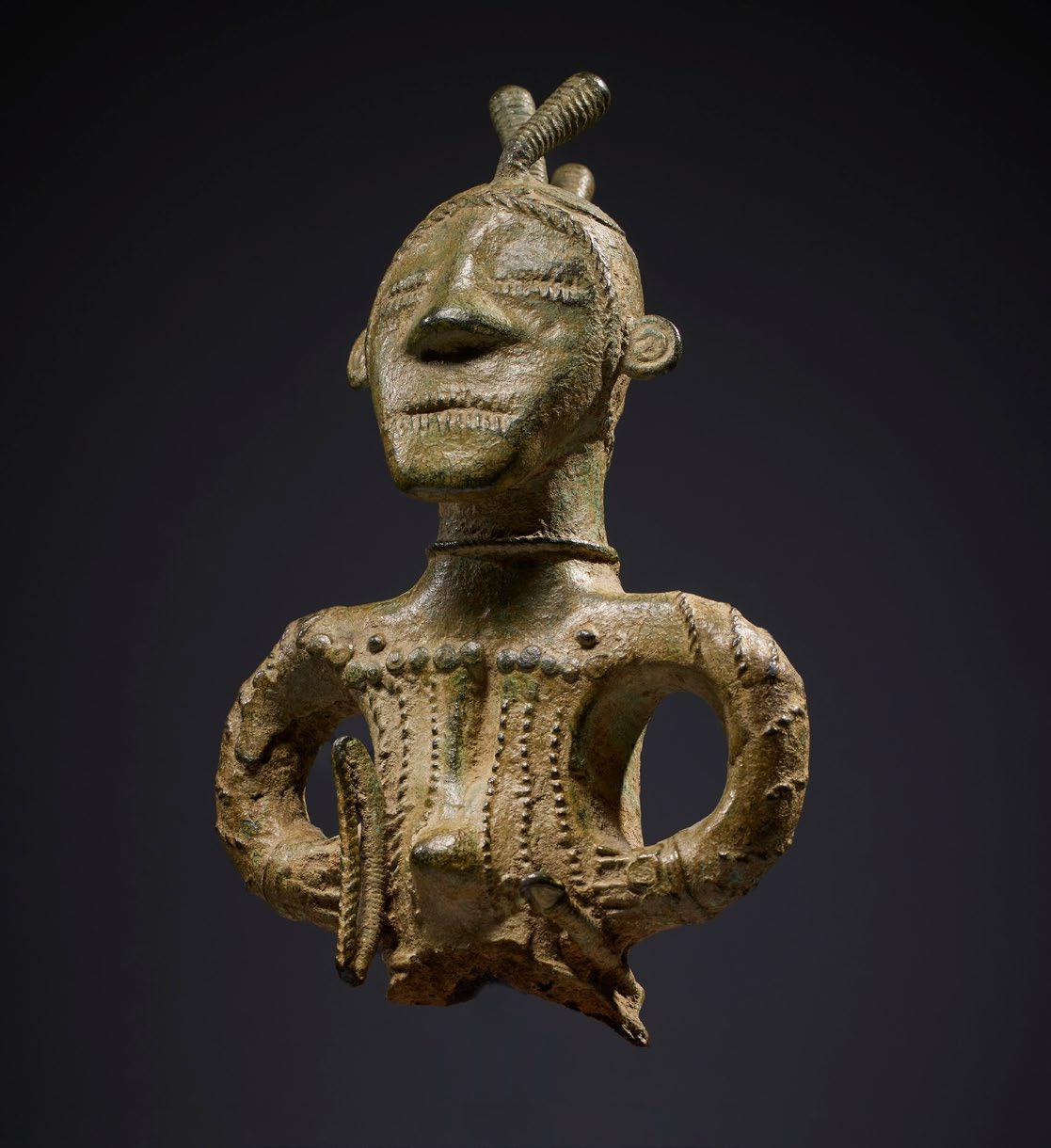

Late 19th / early 20th century Copper alloy
Height: 2½ in, 6½ cm
PROVENANCE
Thomas G.B. Wheelock (1941–2016) Collection, New York, USA
PUBLICATION HISTORY
Christopher D. Roy & Thomas G.B. Wheelock. ‘Land of the Flying
Masks: Art and Culture in Burkina Faso – the Thomas G.B. Wheelock collection’, Munich: Prestel–Verlag, 2007: fig.371

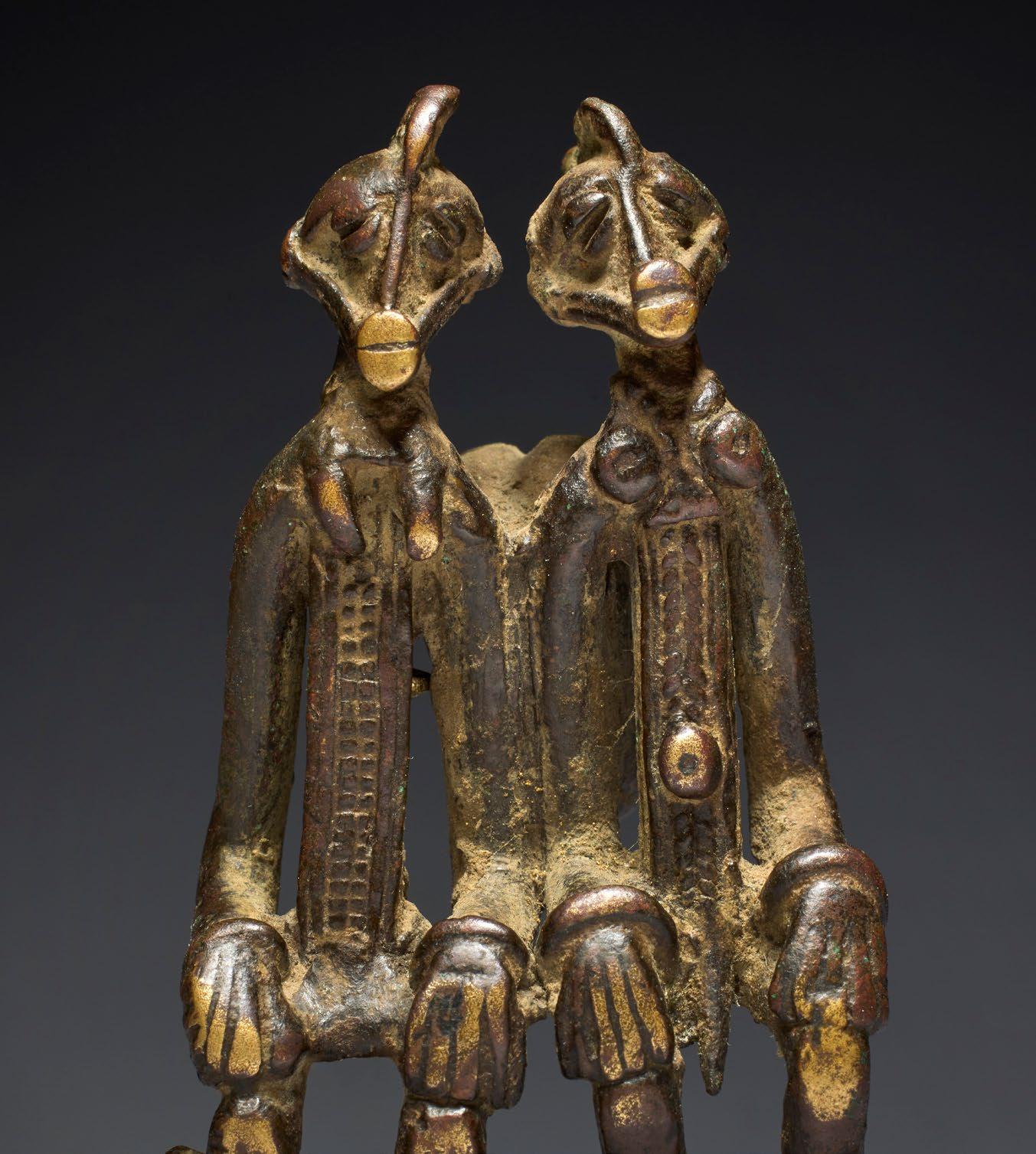

First half 20th century
Bronze
Height: 4¾ in, 12 cm; Width 3¾ in, 9½ cm
PROVENANCE
Gilbert Ouadrago
Michael Oliver, New York



Circa 1600–1720
Copper alloy
Height: 1 in, 2½ cm
PROVENANCE
Dr. Jan Ollers (1917–2001), Sweden
Peter Adler, London, UK
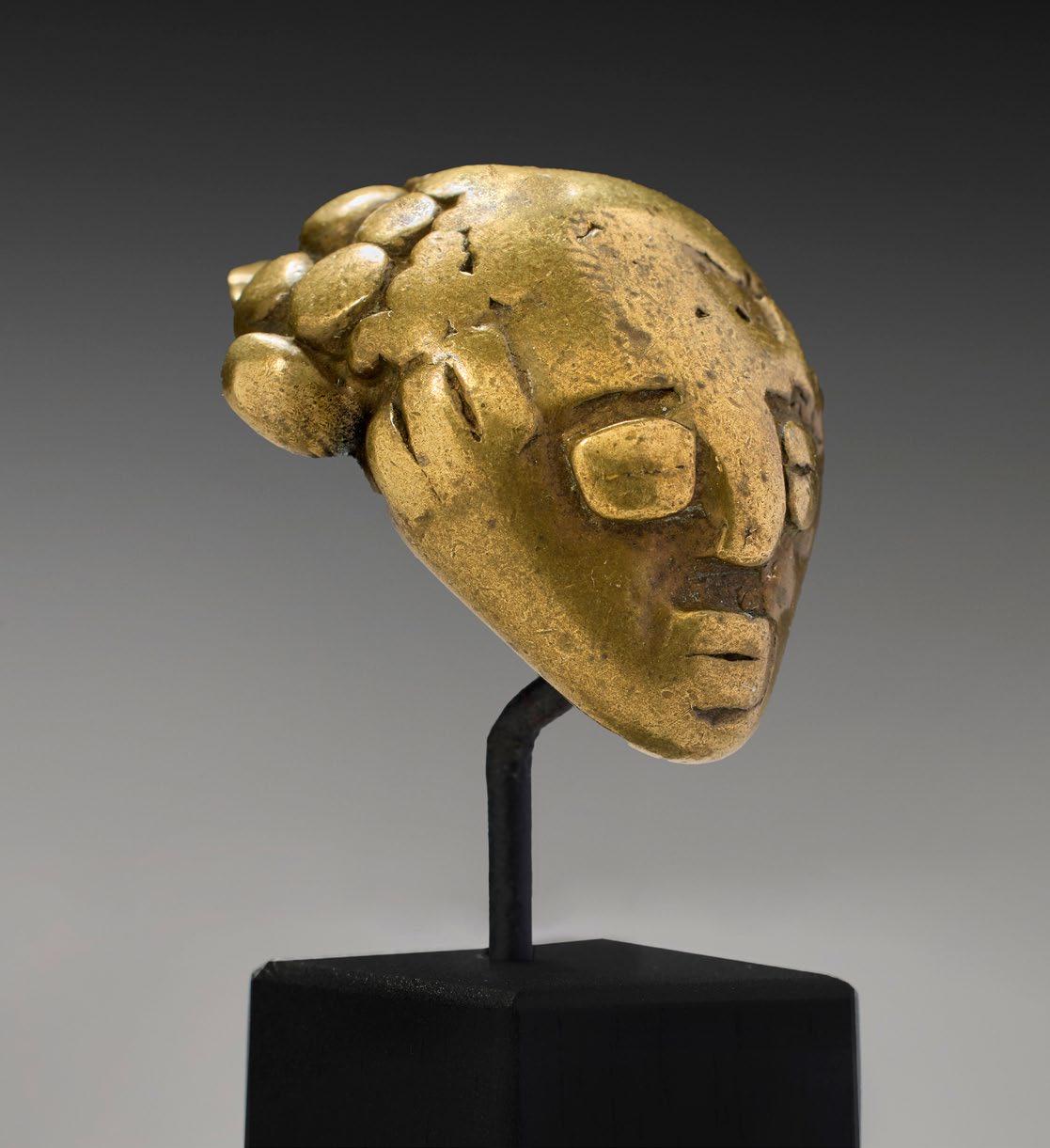
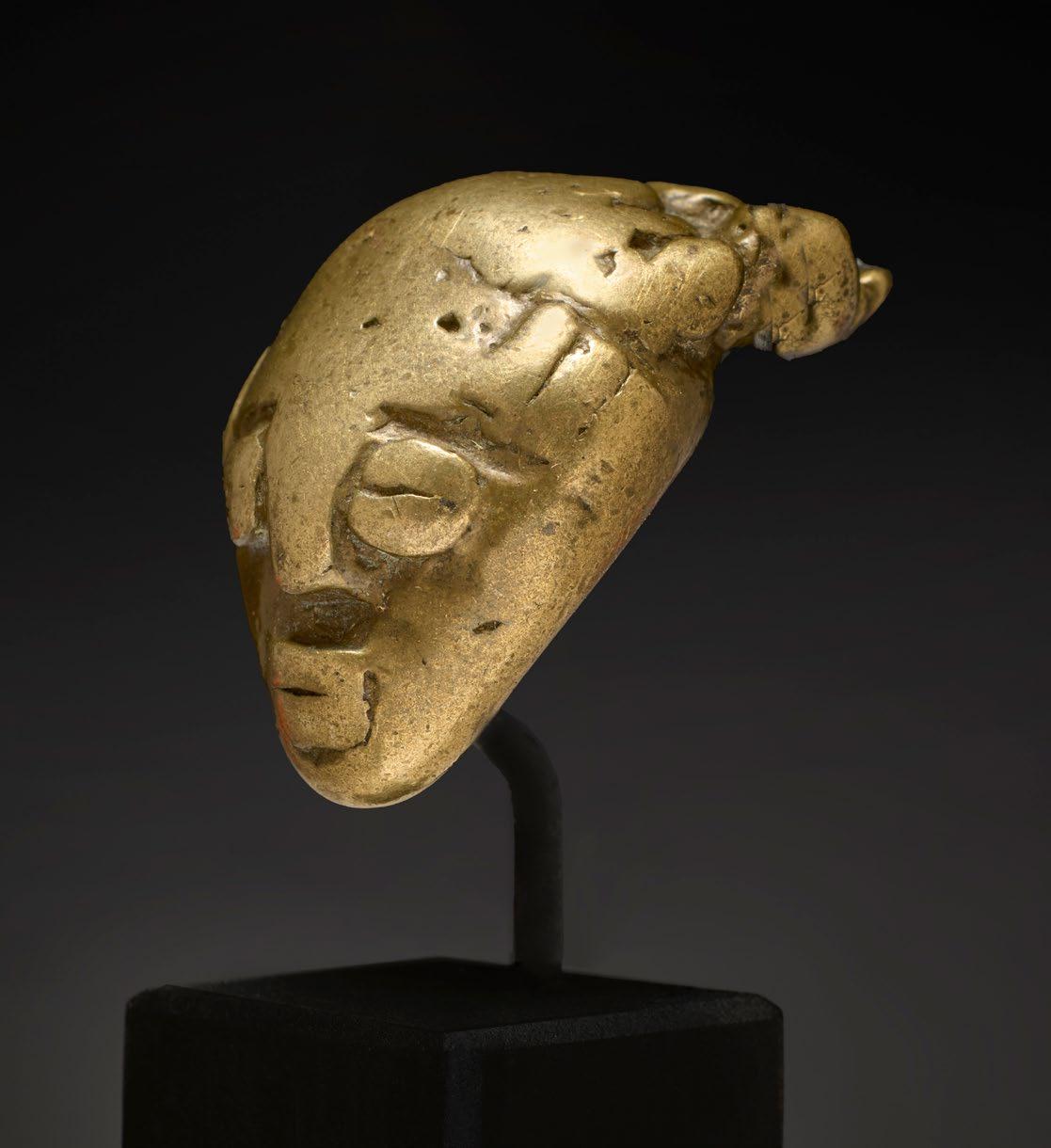

Circa 1600–1720
Copper alloy
Height: 1 in, 2½ cm
PROVENANCE
Dr. Jan Ollers (1917–2001), Sweden
Peter Adler, London, UK

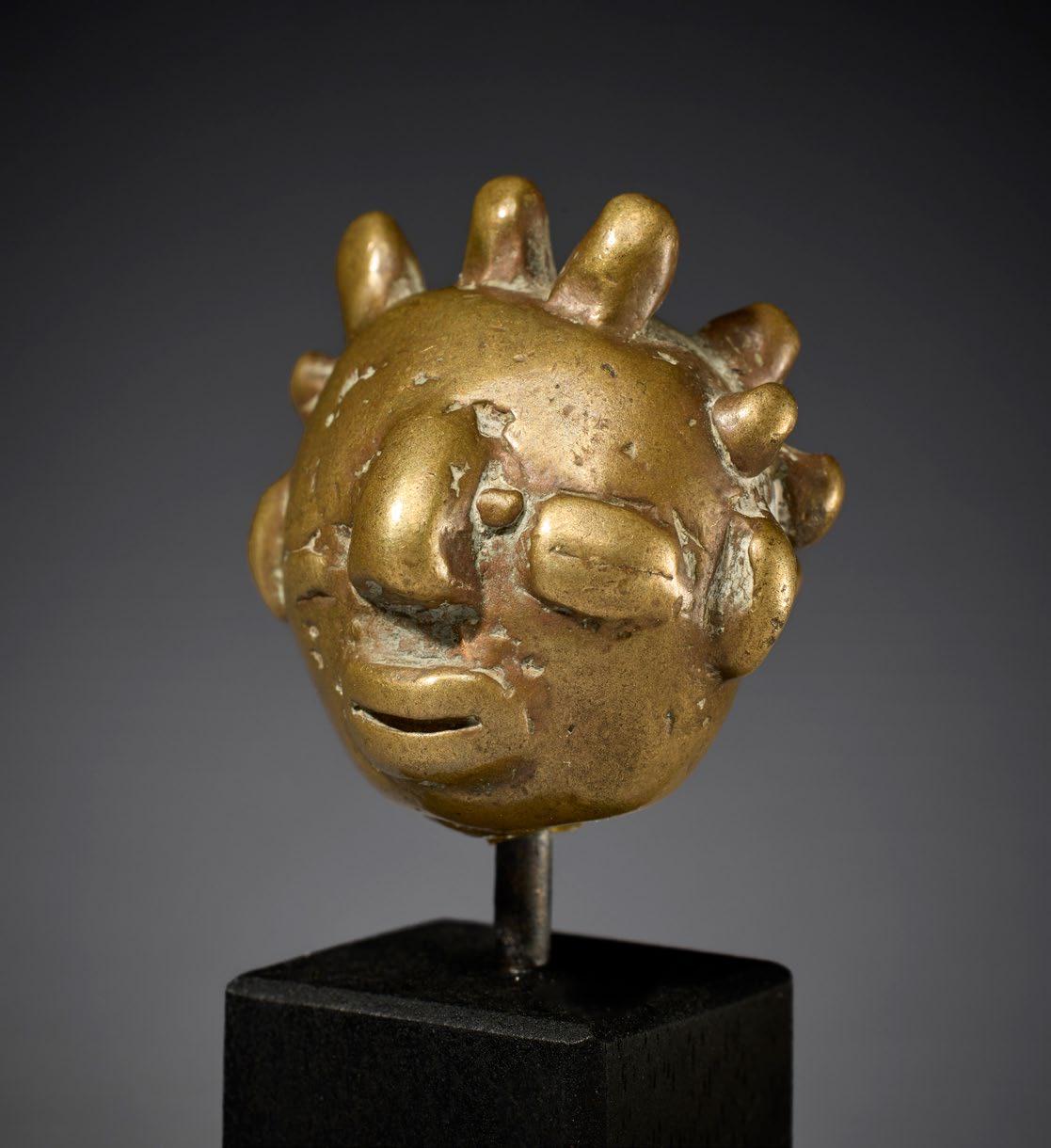

Circa 1600–1720
Copper alloy
Height: 1 in, 2½ cm
PROVENANCE
Dr. Jan Ollers (1917–2001), Sweden
Peter Adler, London, UK



19th century
Bronze
Height: 2 in, 5 cm
PROVENANCE
Pierre Dartevelle (1940–2022), Belgium circa 1975

Late 19th / early 20th century Copper alloy
Height: 3½ in, 9 cm
PROVENANCE
Pierre Loos, Brussels

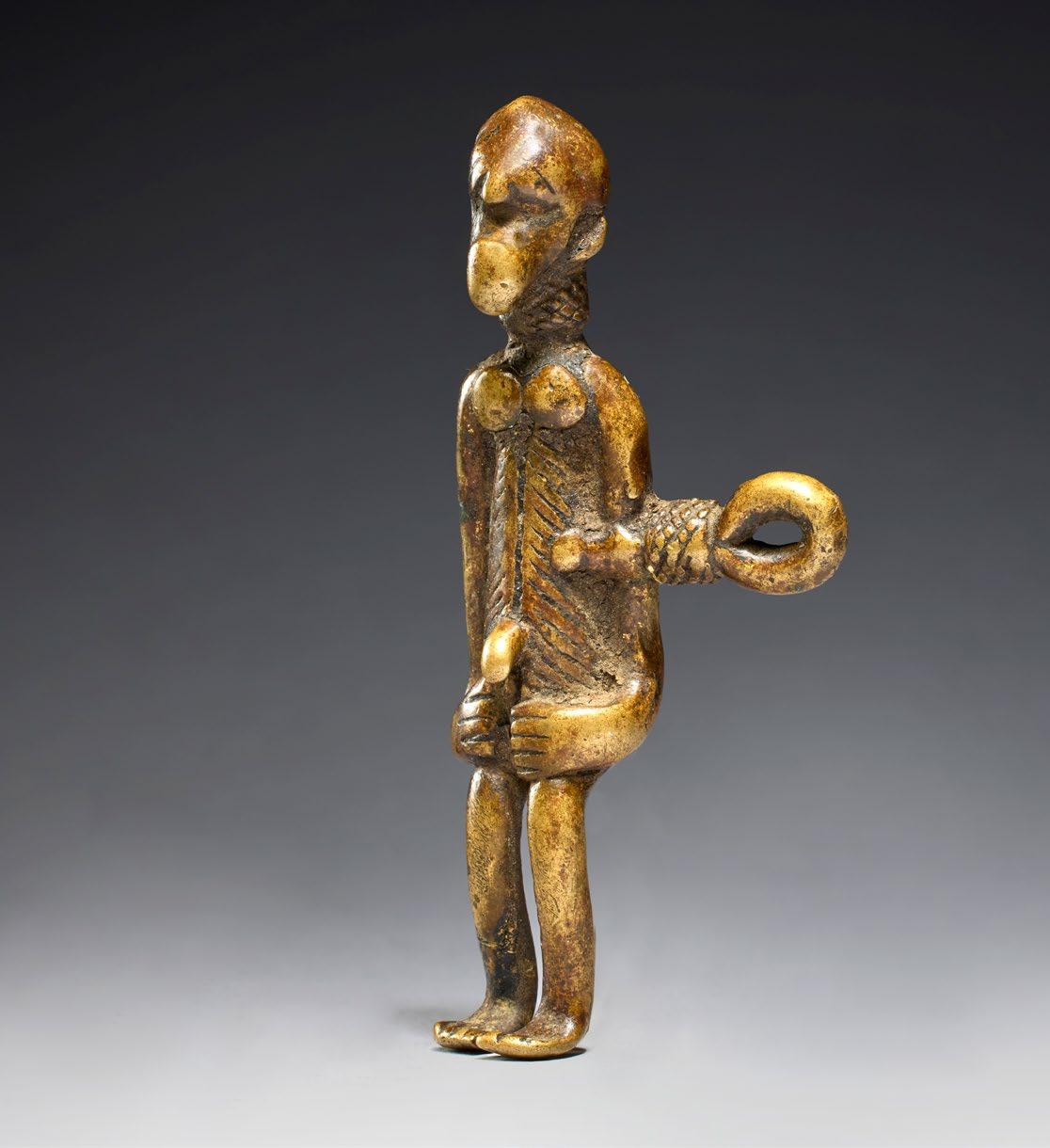

Circa 18th – 19th century Copper alloy
Height: 5¼ in, 13½ cm
PROVENANCE
Olivier Larroque, Nîmes, France



First half 20th century
Bronze
Height: 2¼ in, 5¾ cm
PROVENANCE
Gilbert Ouadrago
Private Collection, New York

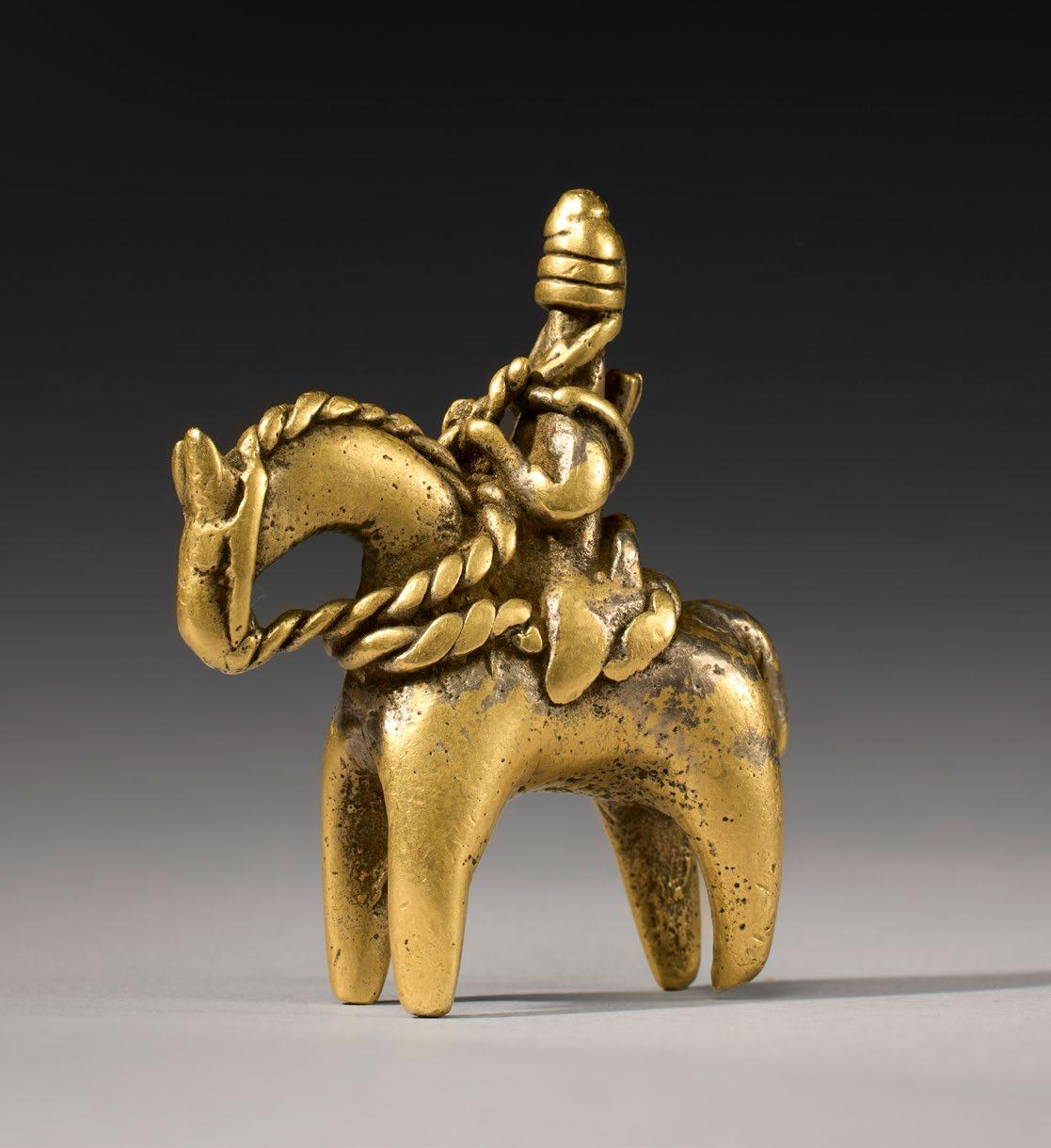
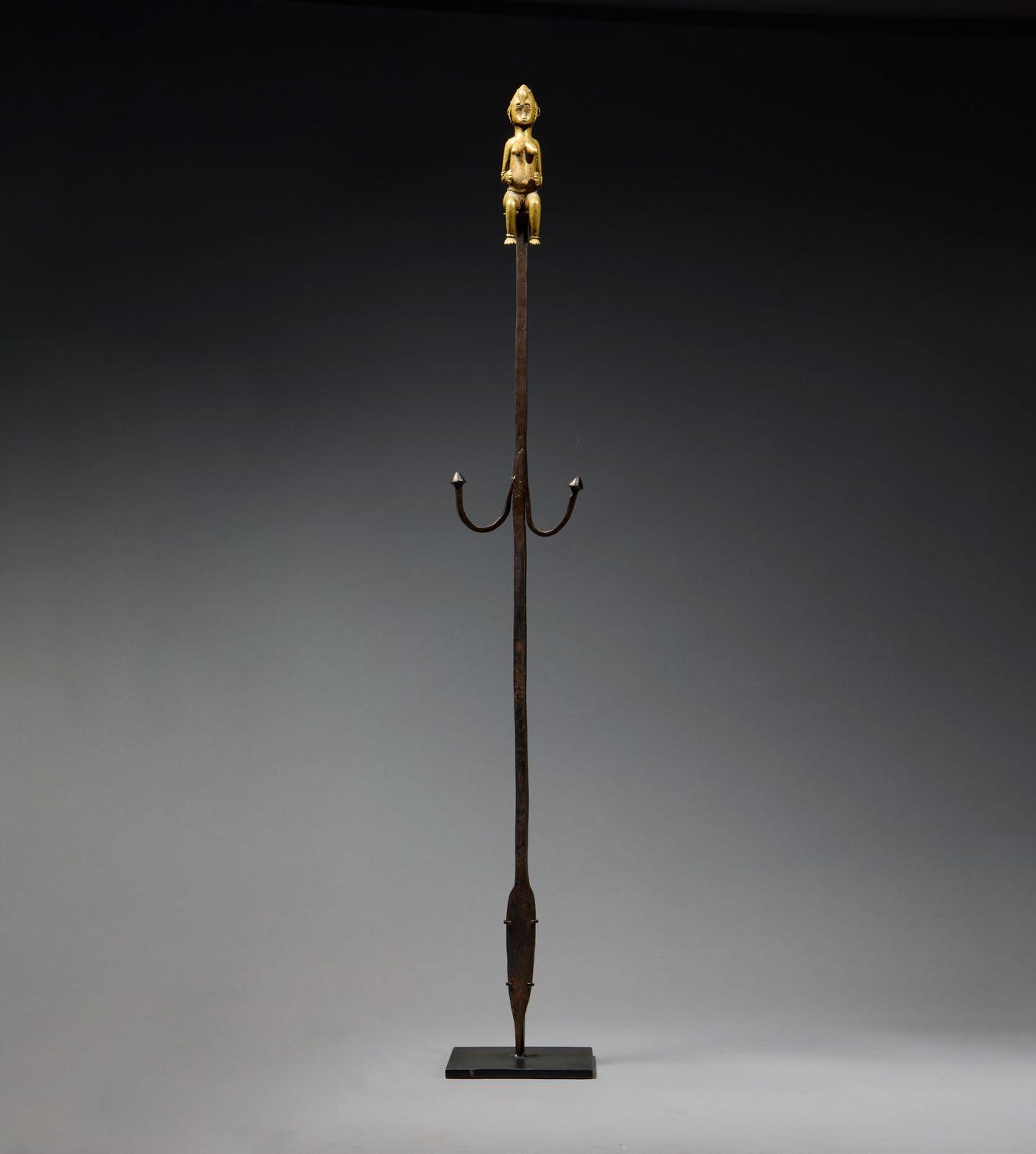
First half 20th century
Copper alloy, iron
Height: 29 in, 74 cm
PROVENANCE
Mamadi Sono, Abidjan, late 1970’s
Michael Oliver, New York

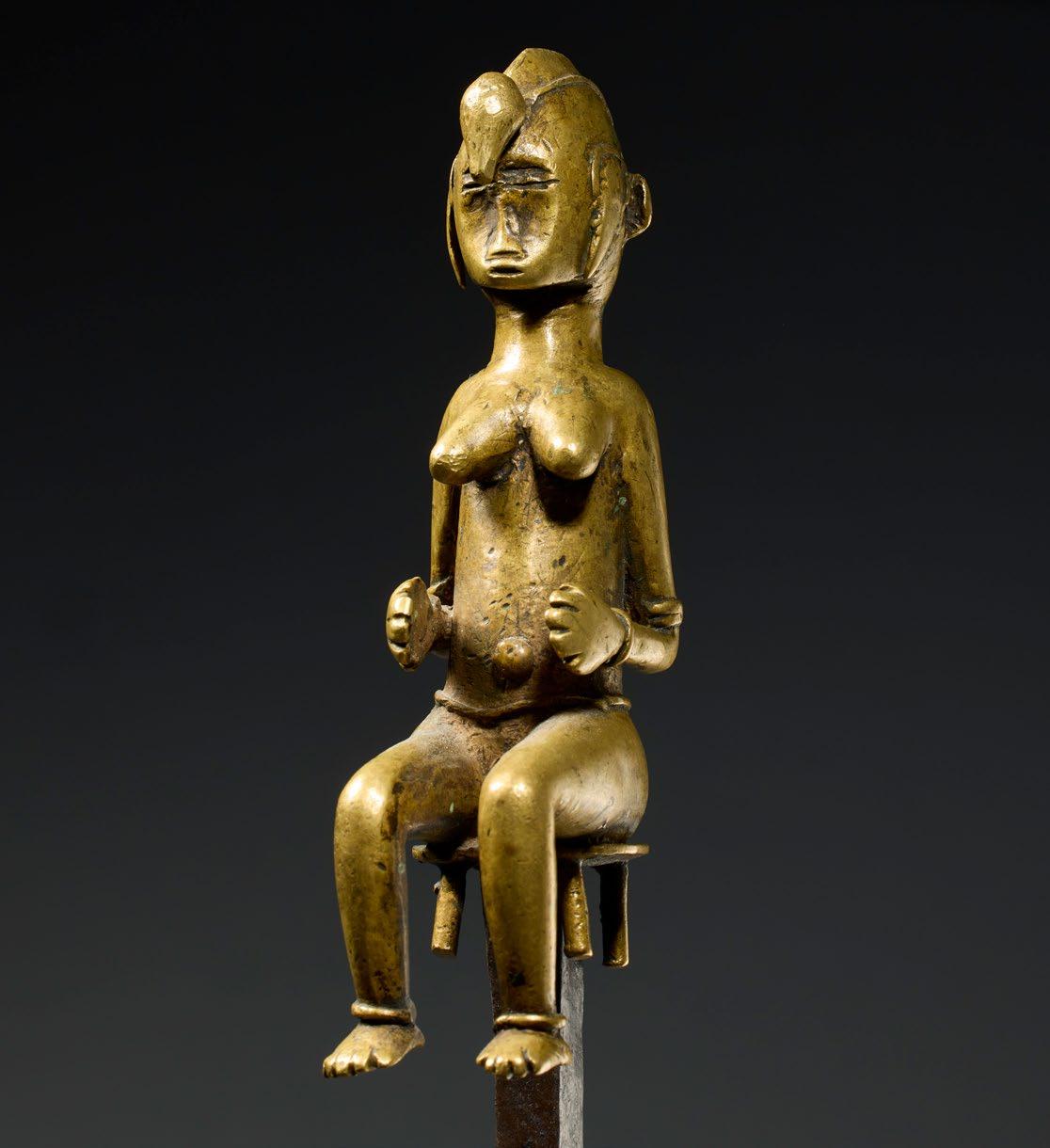
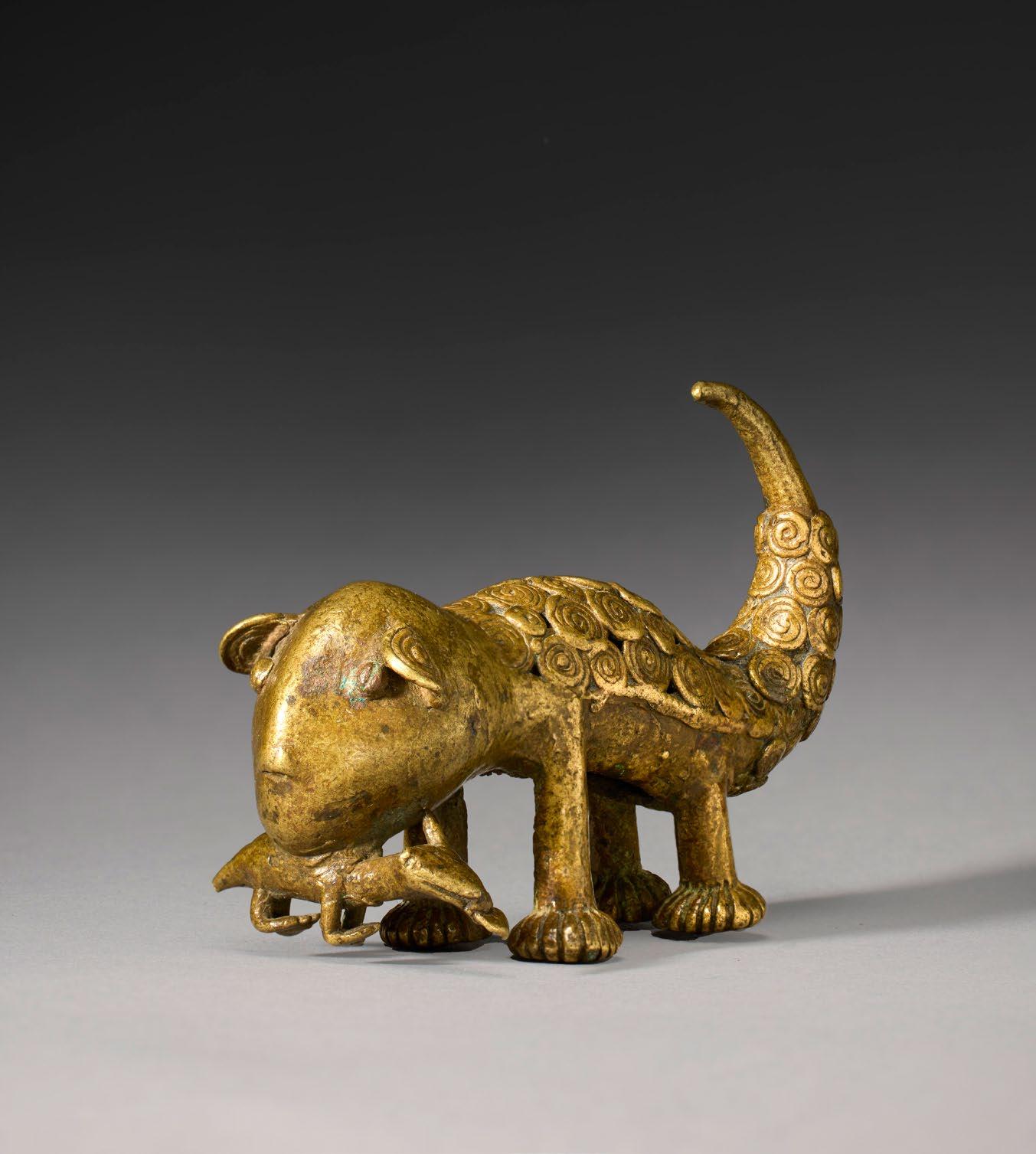
Late 19th / early 20th century Copper alloy
Length: 3¾ in, 9½ cm
PROVENANCE
Maurice L. Bonnefoy Collection (1920–1999), New York City


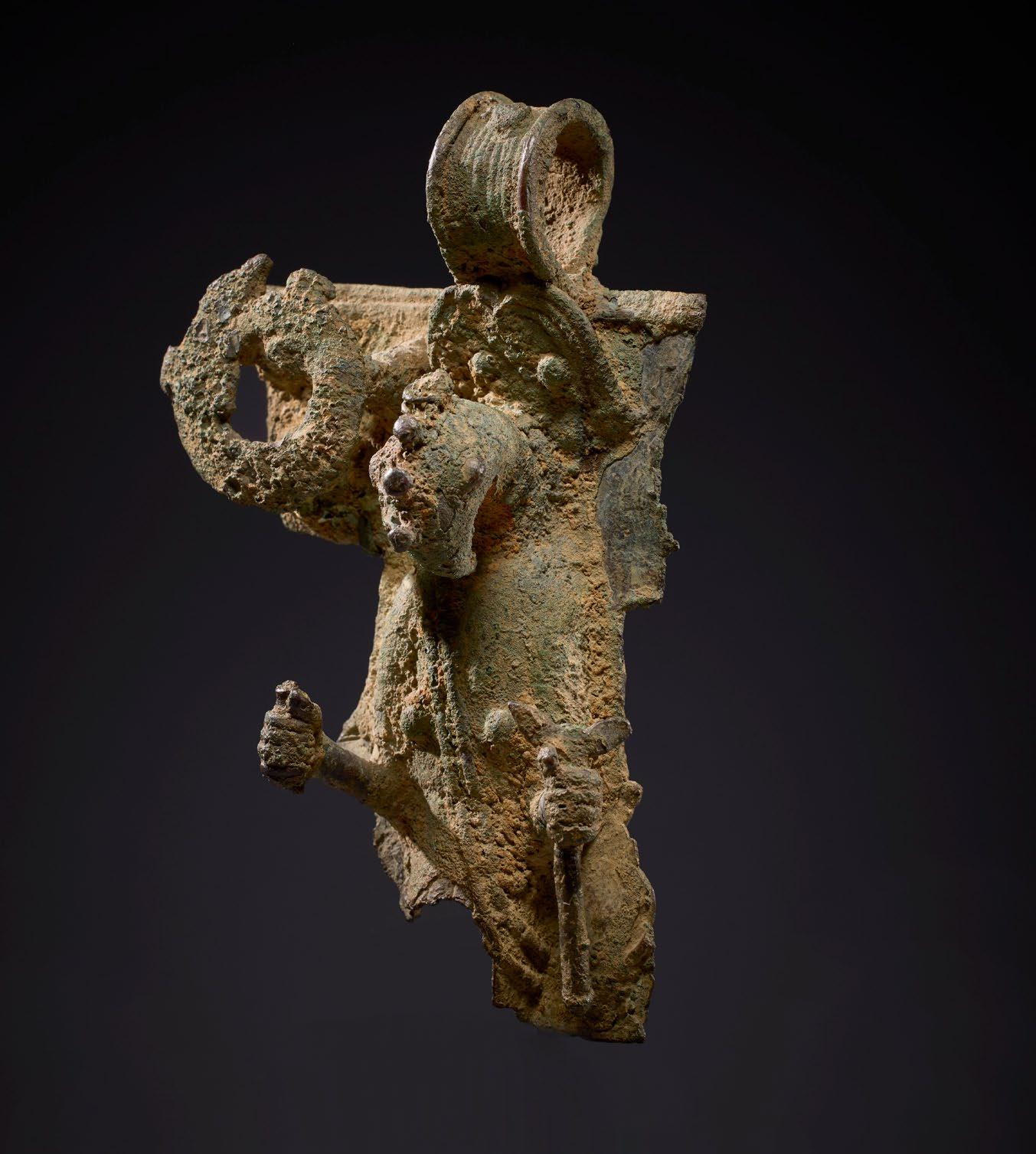
Circa 18th Century
Copper alloy, glass beads
Height: 8 in, 20 cm
PROVENANCE
Merton Simpson (1928–2013), New York
Barry Hecht Collection, Maryland
PUBLICATION HISTORY
Animals in African Art. From the Familiar to the Marvelous’, by Roberts (Allen F.), New York: The Museum for African Art, 1995:100, #99
EXHIBITION HISTORY
New York, USA: ‘Animals in African Art: From the Familiar to the Marvelous’, The Museum for African Art, 31 March–31 December 1995; additional venues:
– Montgomery, Alabama, Montgomery Museum of Fine Arts, 2 February – April 1996
– Omaha, Nebraska, Joslyn Art Museum, 18 May–14 July 1996
– Charlotte, North Carolina, The Mint Museum, September–December 1996
– Dallas, Texas, Dallas Museum of Art, 2 February–27 April 1997

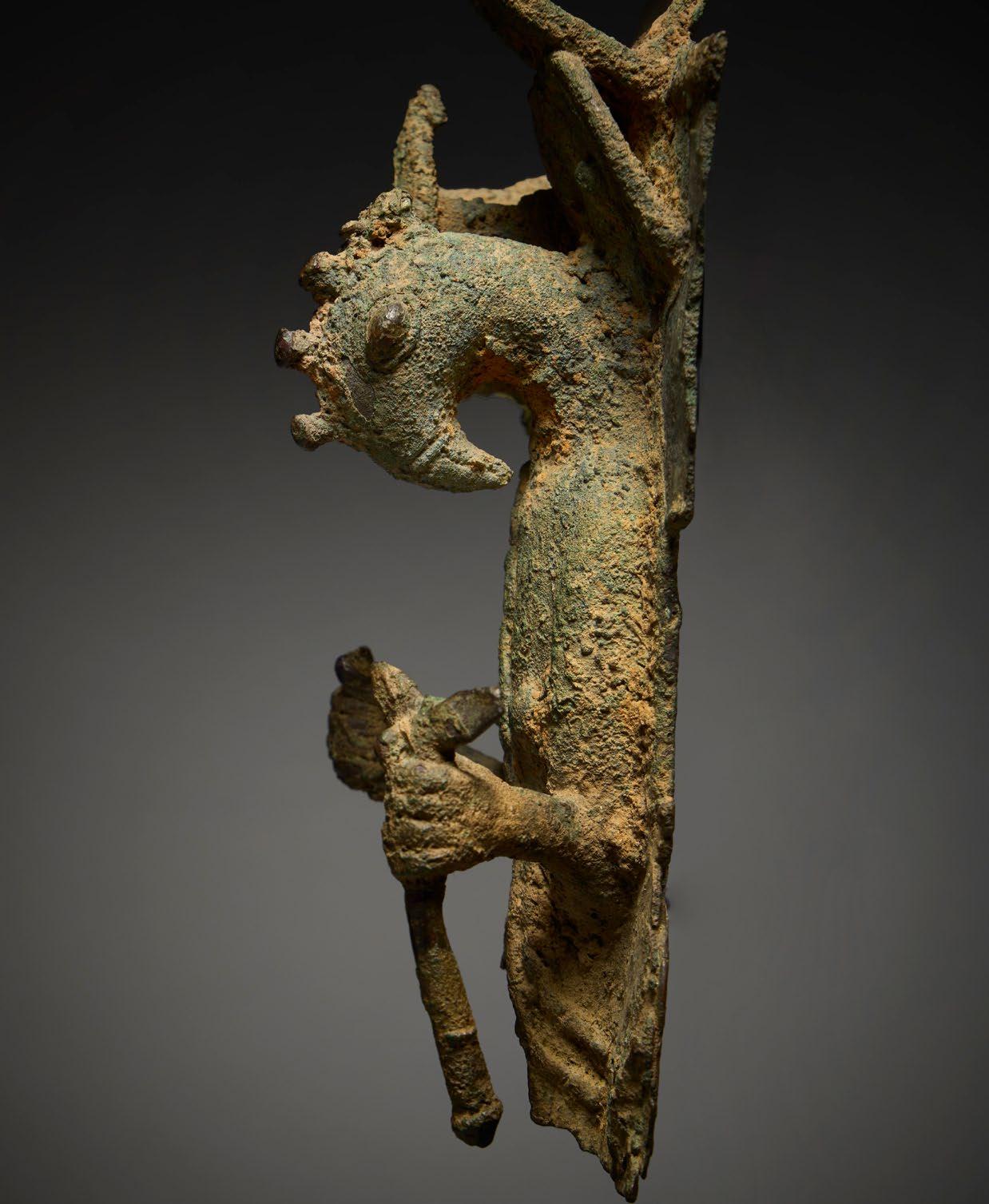

First half 20th century
Gold
Height: 1½in, 3¾ cm; Width: 2 in, 5 cm
PROVENANCE
Constance McCormick Fearing (1926–2019), Montecito, California



First half 20th century
Gold
Height: 1½ in, 3½ cm
PROVENANCE
Constance McCormick Fearing (1926–2019), Montecito, California

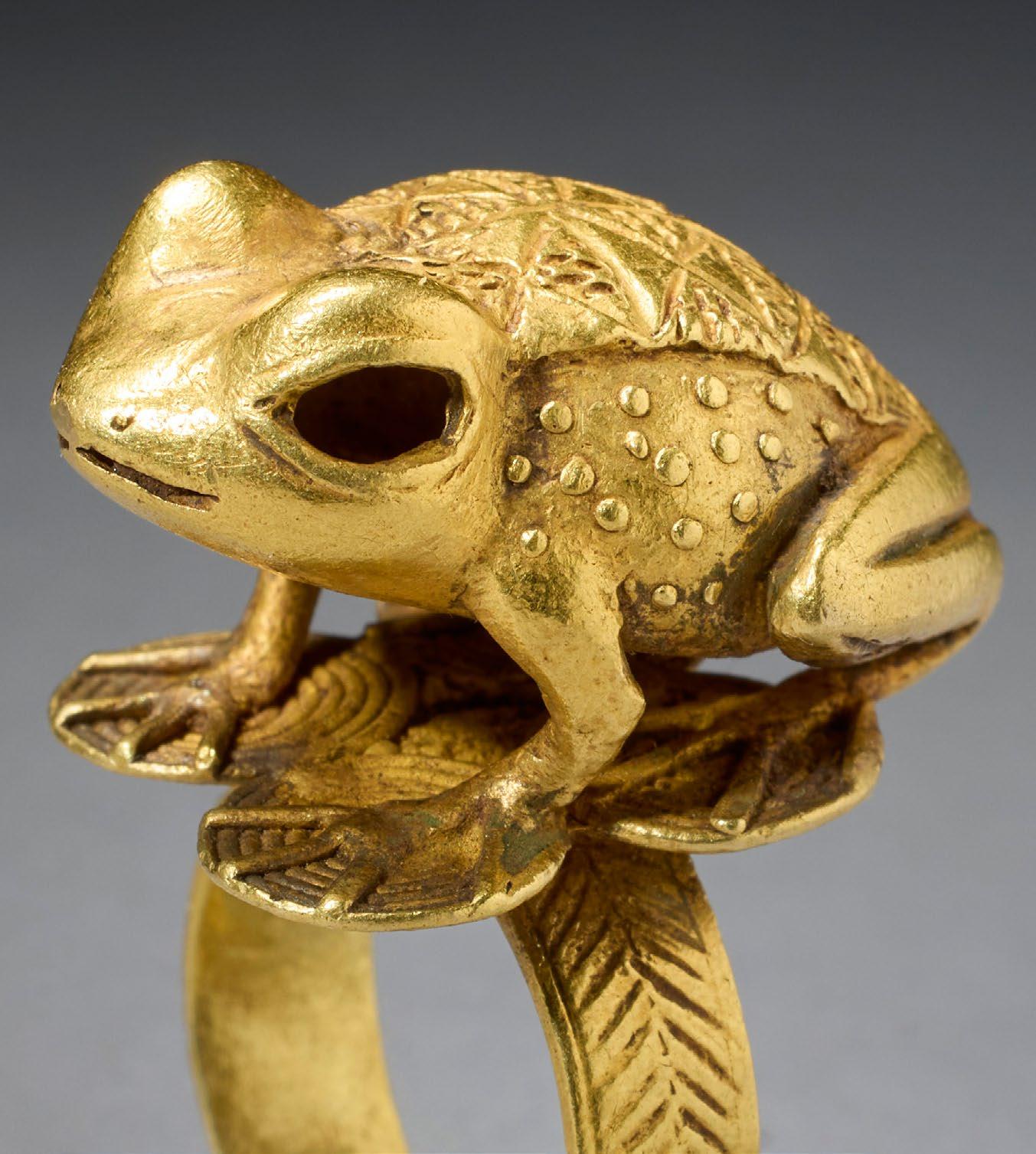

First half 20th century
Gold
Diameter: 4½ in, 11 cm
PROVENANCE
Constance McCormick Fearing (1926–2019), Montecito, California



First half 20th century
Gold
Height: 2½ in, 6 cm; Width 3 in, 8 cm
PROVENANCE
Constance McCormick Fearing (1926–2019), Montecito, California
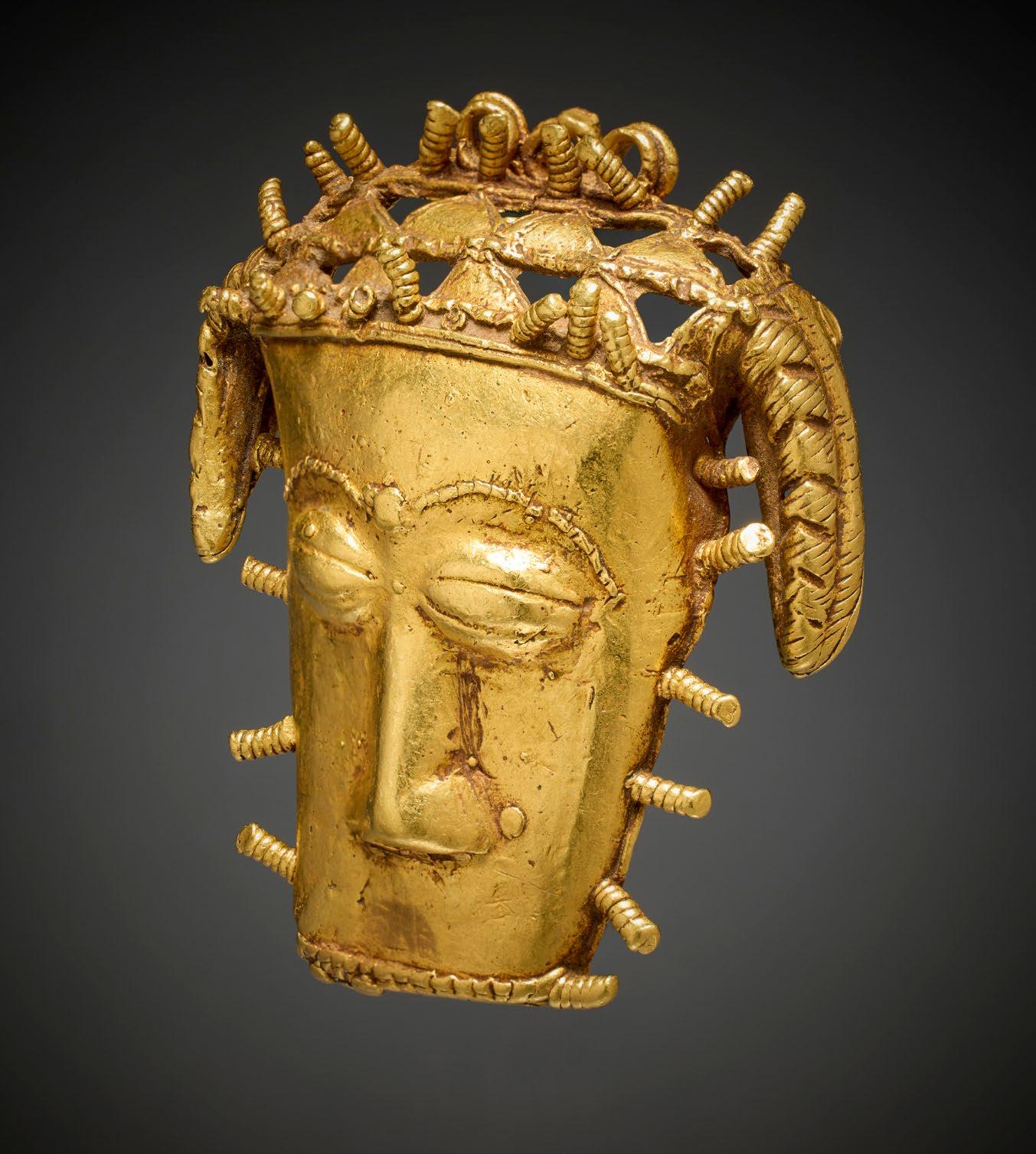
First half 20th century
Gold
Height: 2½ in, 6 cm
PROVENANCE
Constance McCormick Fearing (1926–2019), Montecito, California
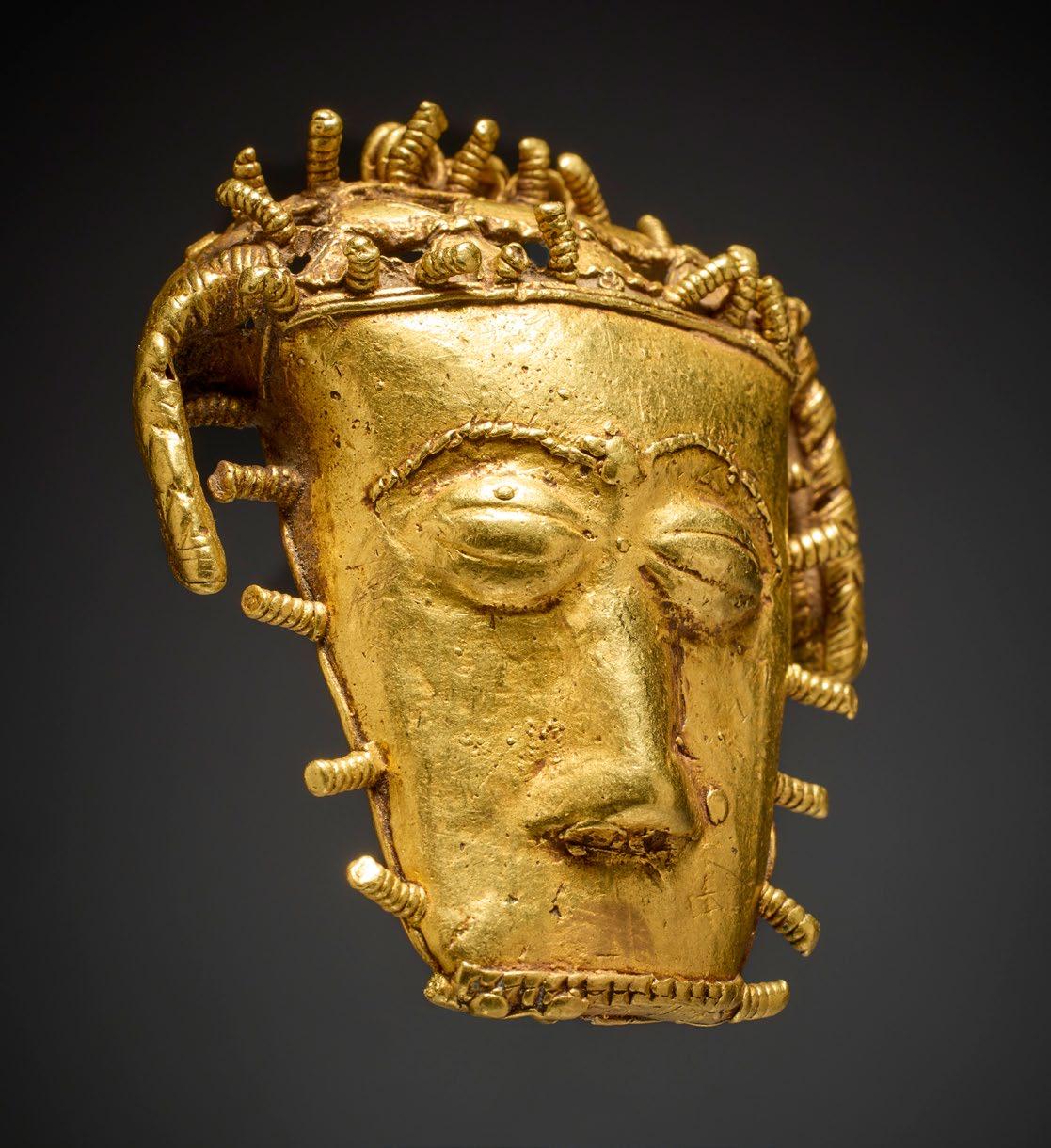




ASANTE, GHANA
First half 20th century
Gold
Height: 1½ in, 4½ cm; Length: 3 in, 8 cm
PROVENANCE
Constance McCormick Fearing (1926–2019), Montecito, California
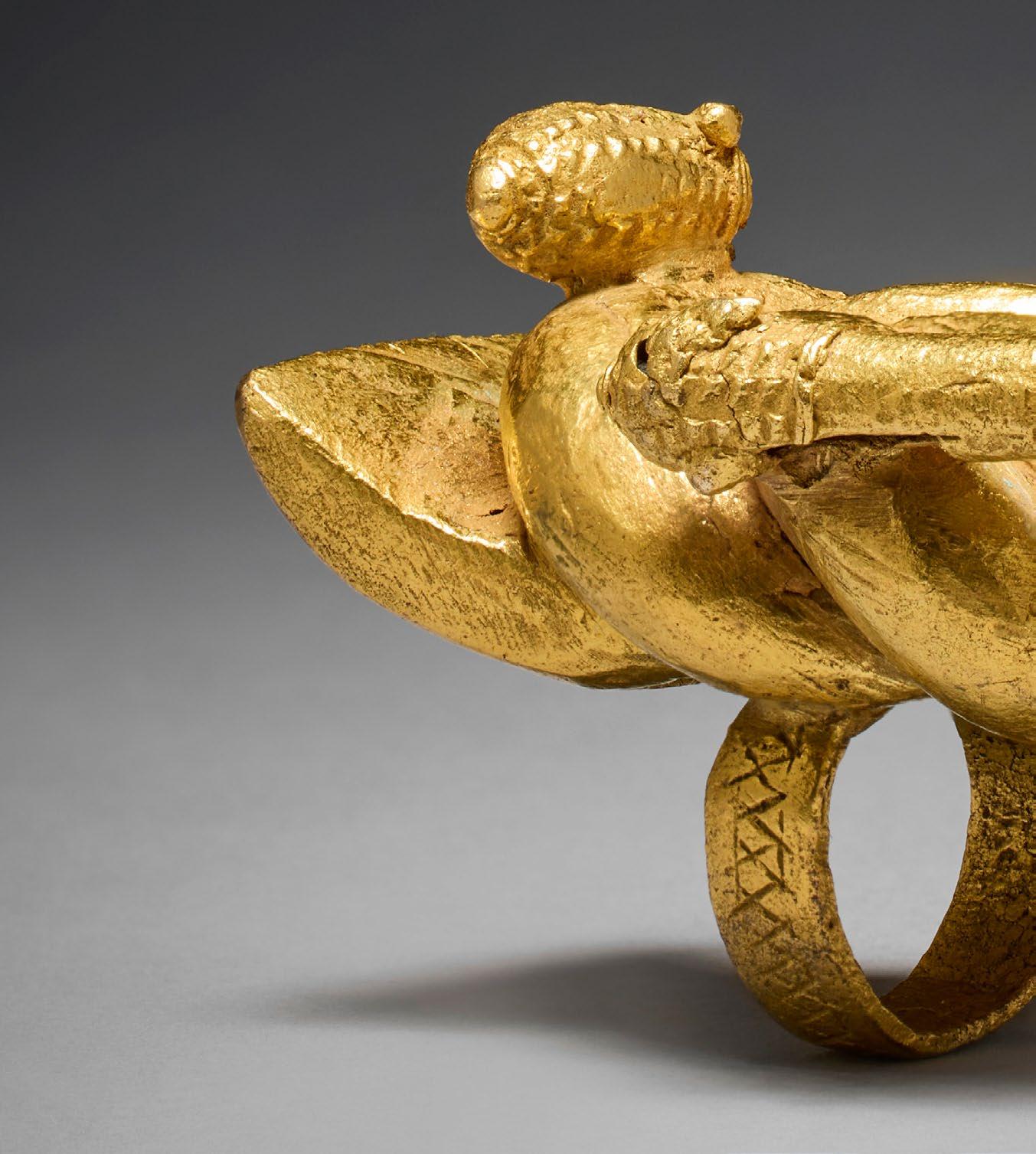




Early 20th century
Gold
Diameter: 3 in, 8 cm
PROVENANCE
Acquired in Abidjan, Ivory Coast, 1963
Lucien Van de Velde, Antwerp, Belgium, acquired in 1963
Private collection
PUBLICATION HISTORY
Van de Velde (Lucien), ‘Ivory Coast’, Antwerp: Van de Velde, 2011

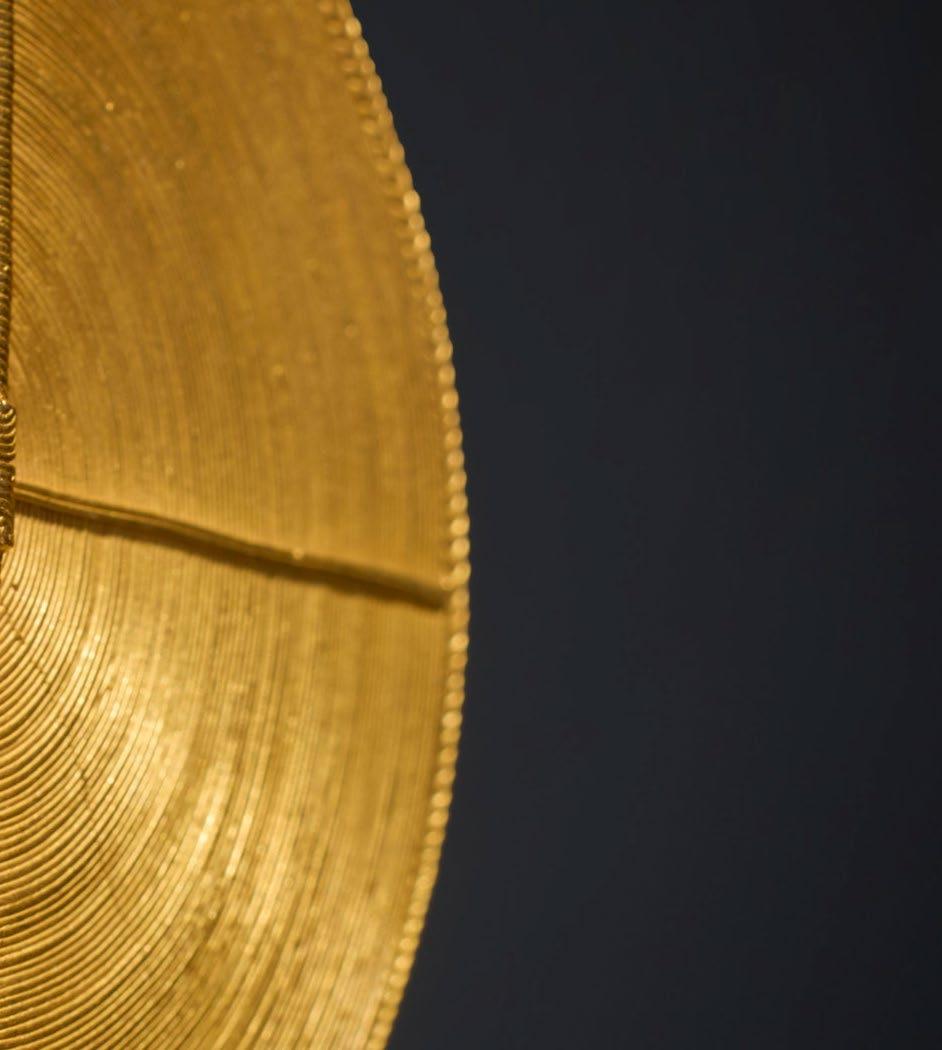
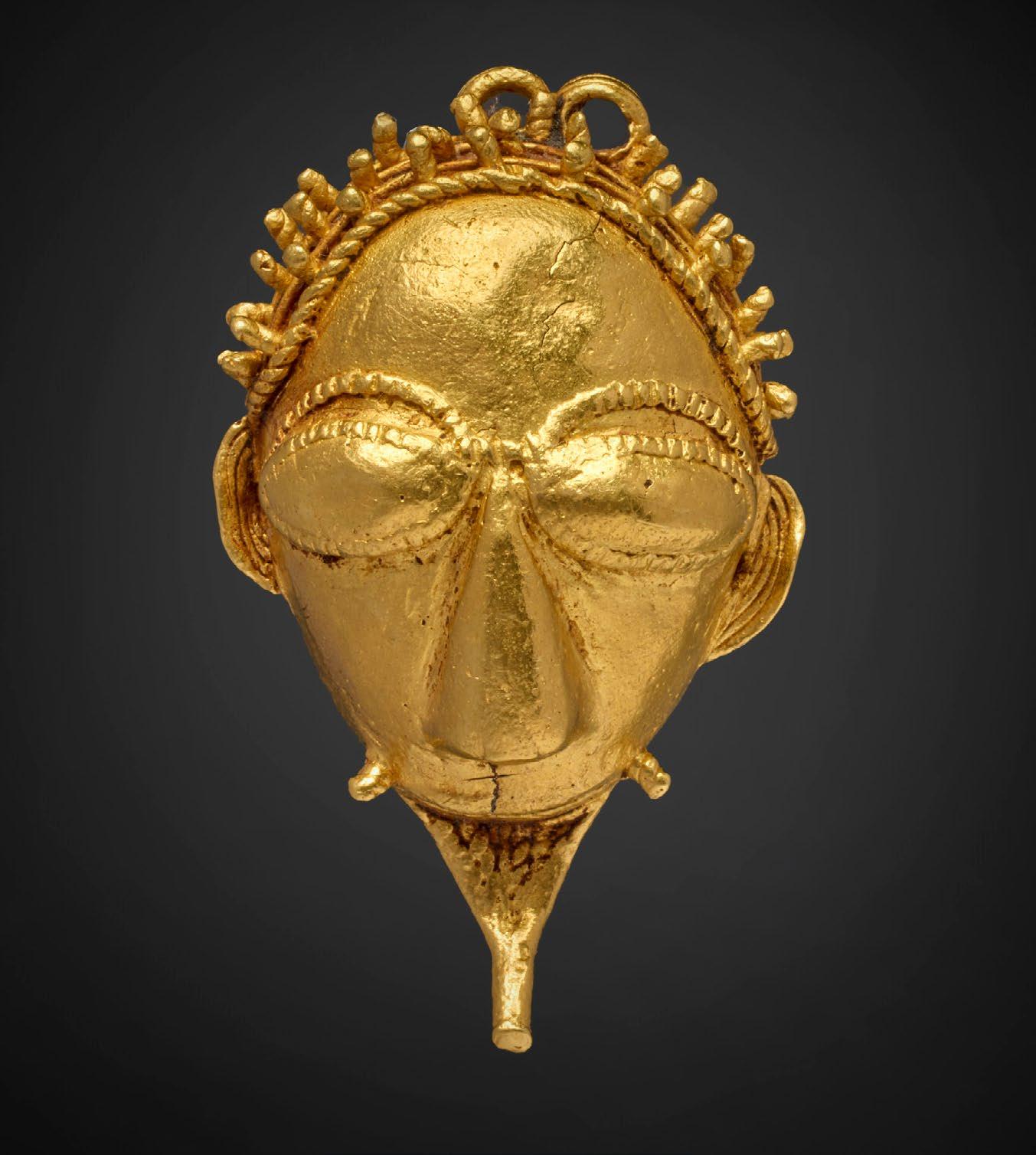
Early 20th century
Gold
Height: 2 in, 5 cm
PROVENANCE
Samir Borro, Belgium
Private Collection, since 2005



Late 19th /early 20th century
Gold
Diameter: 3 in, 8 cm
PROVENANCE
Collected by Louis Roux, planter in Danané (Ivory Coast), between 1900 and 1930
Georges Roux (cousin of the above) collection, Paris, France
Galerie Künzi, Solothurn, Switzerland
Private collection, Olten, Switzerland
Anton Stalder Collection, Solothurn, Switzerland, 2015
Private collection
Bamert (Arnold), ‘Africana. L’art tribal de la forêt vierge et de la savane’, Olten/Paris: Walter/Herscher, 1980:111, pl.71
Expo cat.: Schaedler Karl.Ferdinand, ‘Afrika. Maske und Skulptur’, Olten: Historisches Museum, 1989: #50e (not illustrated)

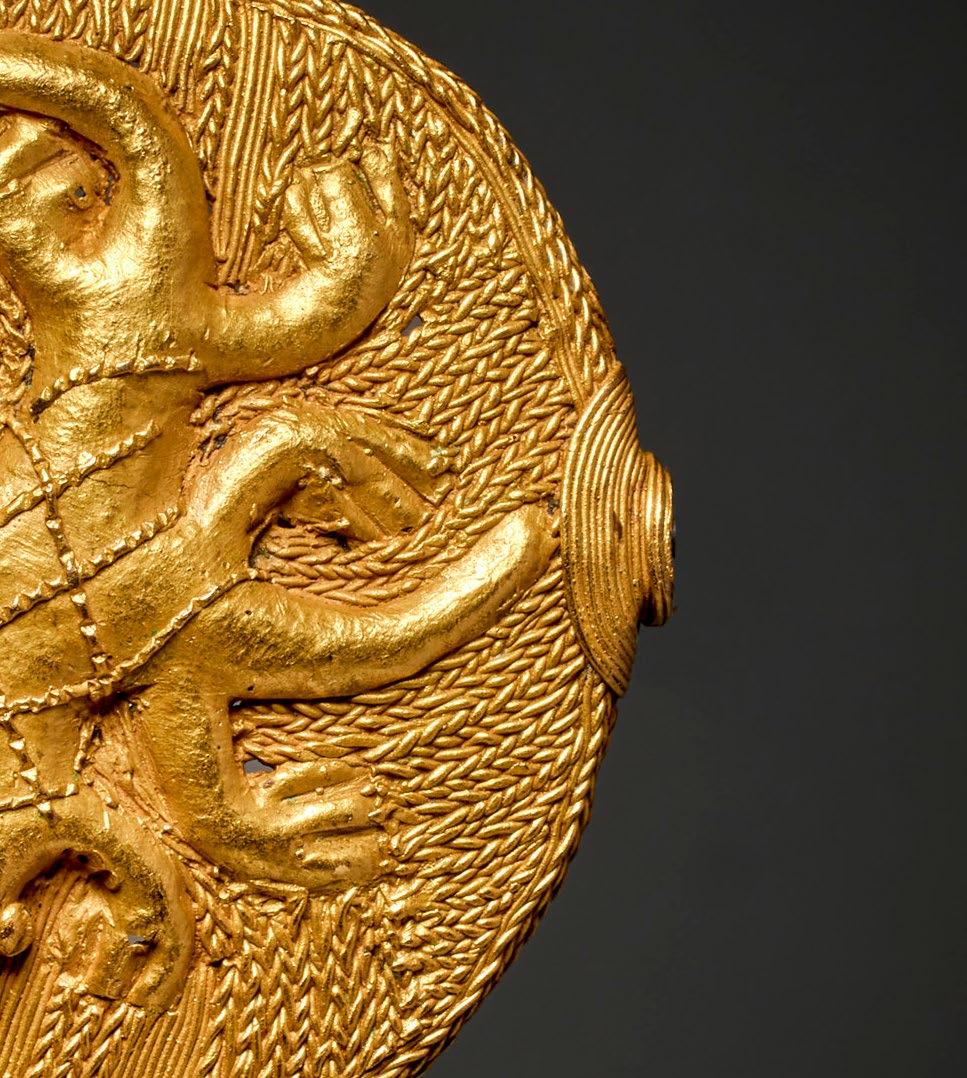

Late 19th/early 20th century
Gold
Length: 30 in, 76 cm
PROVENANCE
Samir Borro, Brussels, Belgium 1960’s
Private collection, Belgium
PUBLICATION HISTORY
Expo cat.: ‘West African Gold Ornaments’, Barcelona: Galeria David
Serra – Fine Tribal Art, 2022:39

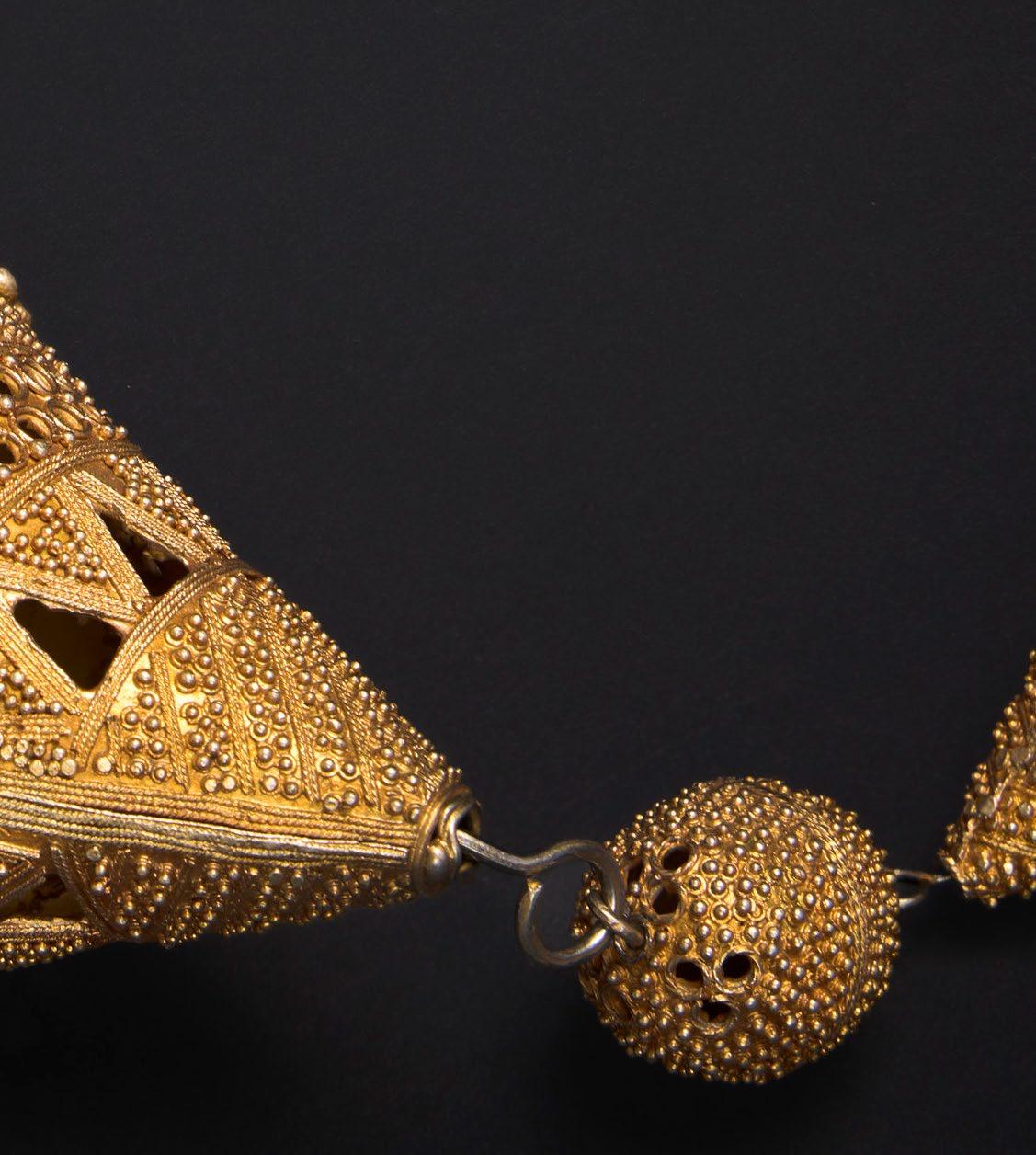
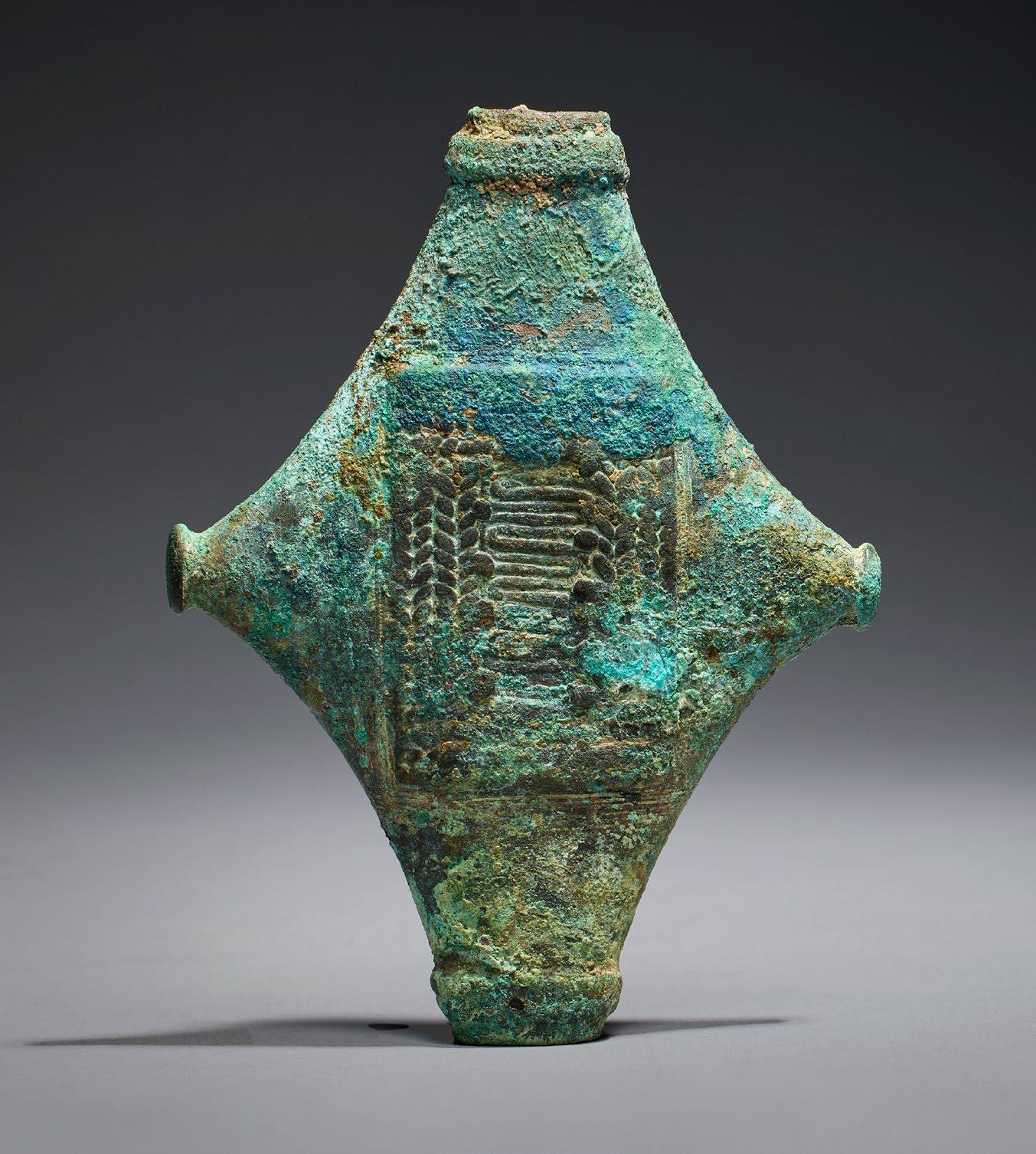
INLAND NIGER DELTA (DJENNE), MALI
Circa mid-15th century
Bronze
Height: 3½ in, 9 cm
PROVENANCE
Marc & Denyse Ginzberg Collection
PUBLICATION HISTORY
‘African Forms’, by Marc (1930–2012) Ginzberg, 2000. Illustrated p 253

Late 19th / early 20th century
Copper alloy
Height: 5½ in, 13 cm
PROVENANCE
Collected between 1920–1935 by François Restiau
Lucien Van de Velde, Antwerp, Belgium 2005
Private collection, Belgium
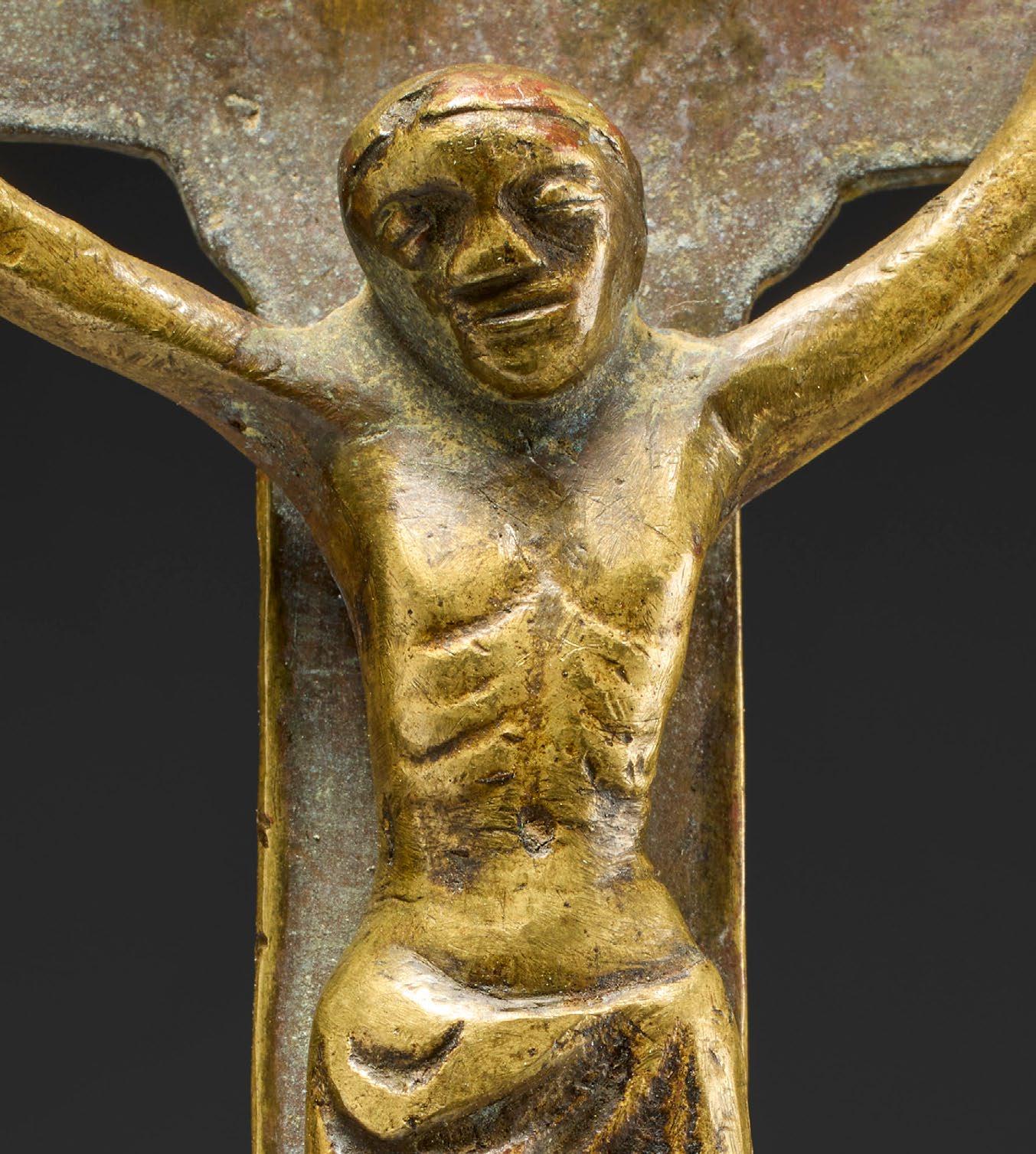


Late 19th century Silver alloy
Height: 4 in, 10 cm; Diameter: 8 in, 20 cm
PROVENANCE
Leonard Kahan, New Jersey
Gary Schulze, New York
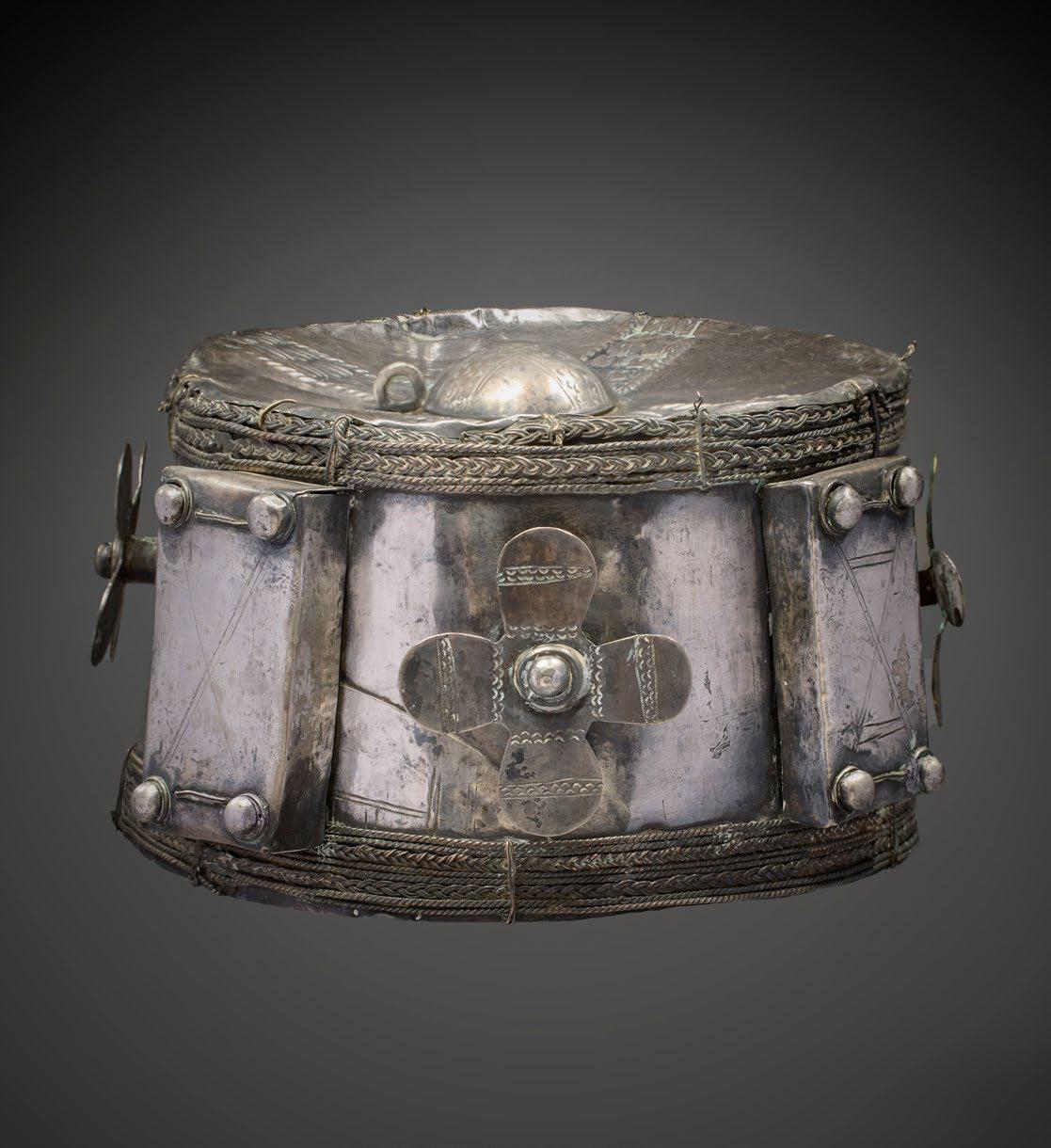

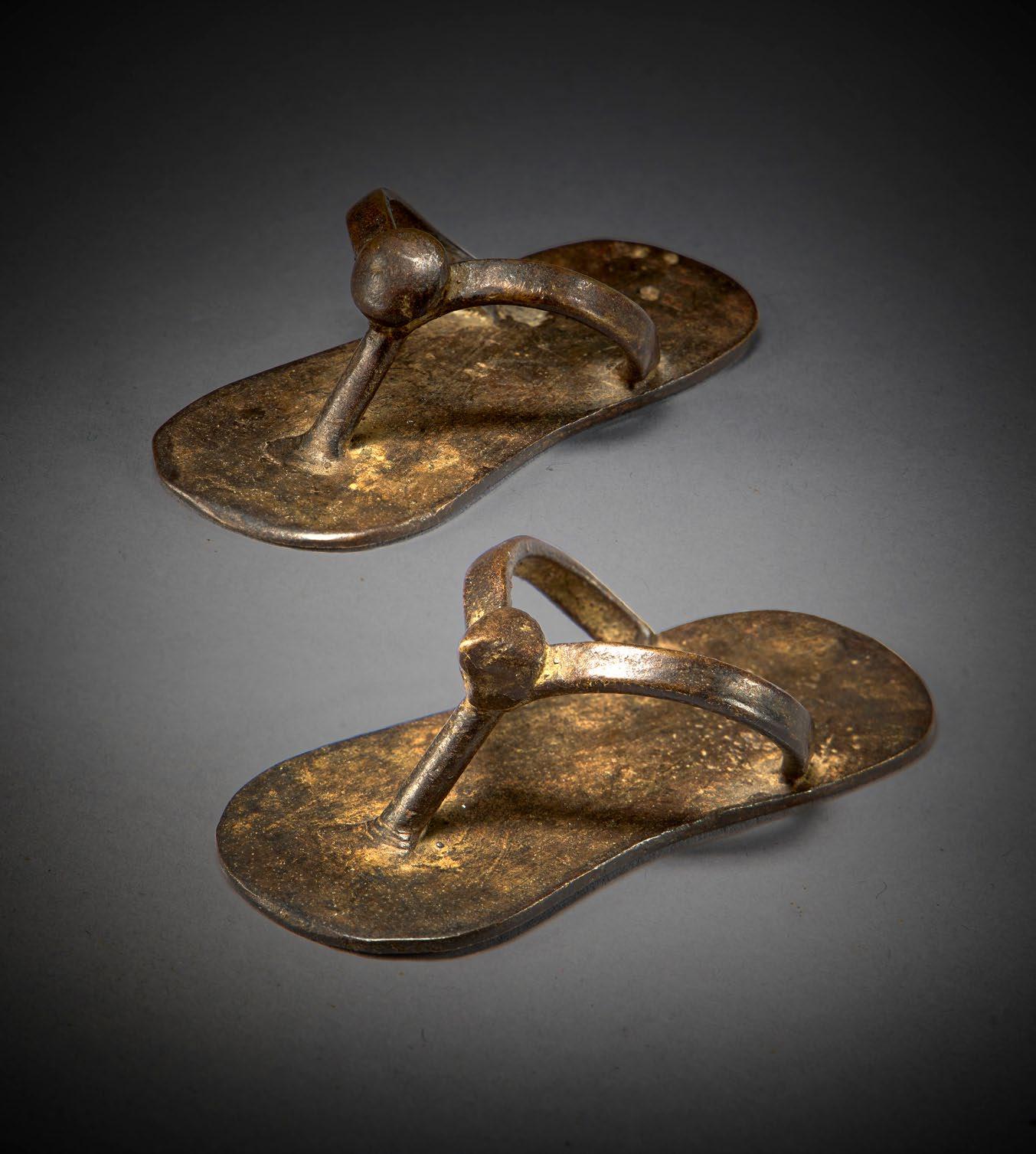
AKAN, GHANA
19th –20th century
Copper alloy
Length: 2½ in, 6 cm
PROVENANCE
Michael Backman, London
Private Collection, New York

Late 19th / early 20th century Copper alloy
Height: 2¼ in, 6¾ cm
PROVENANCE
Thomas G.B. Wheelock Collection (1941–2016), New York, USA
PUBLICATION HISTORY
Roy (Christopher D). & Thomas G.B. Wheelock. ‘Land of the Flying
Masks: Art and Culture in Burkina Faso–the Thomas G.B. Wheelock collection’, Munich: Prestel–Verlag, 2007: fig.371
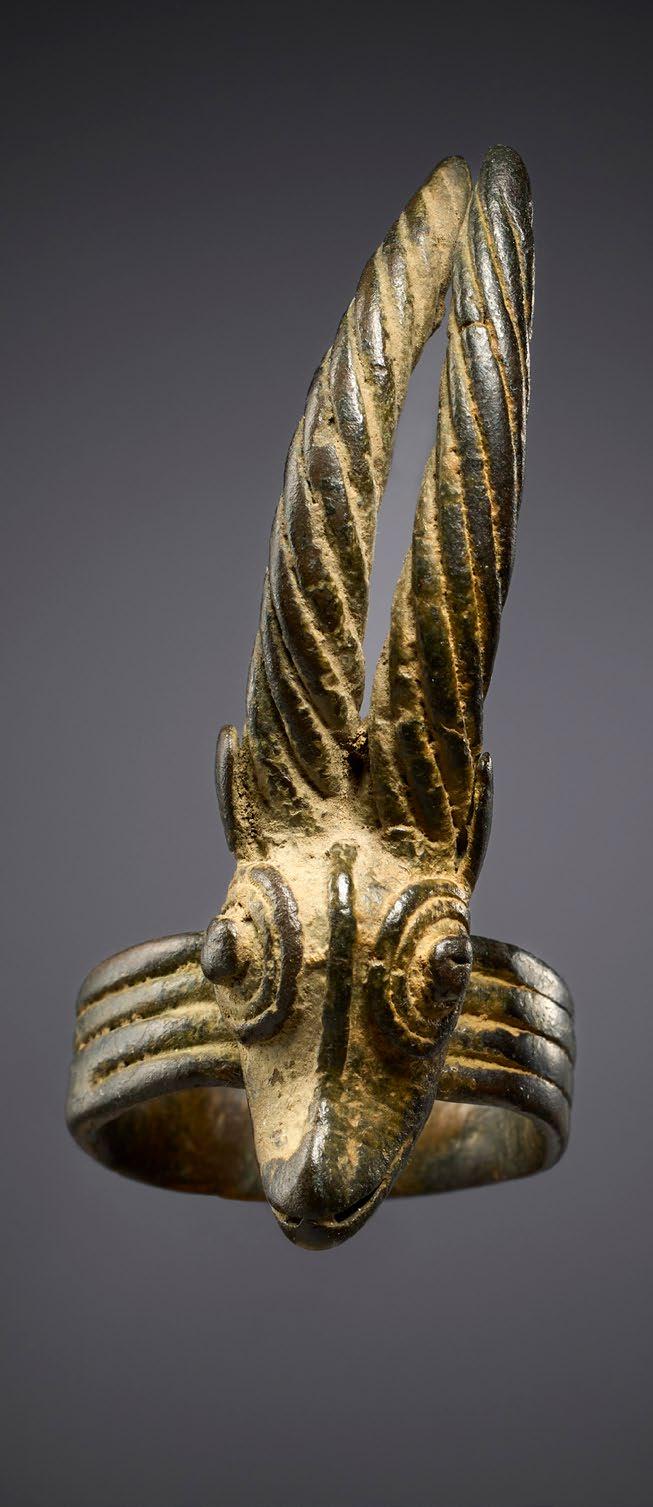

First half 20th century
Bronze
Circumference: 28 in, 75 cm
PROVENANCE
Mamadi Sono, Abidjan, late 1970’s
Private Collection, New York
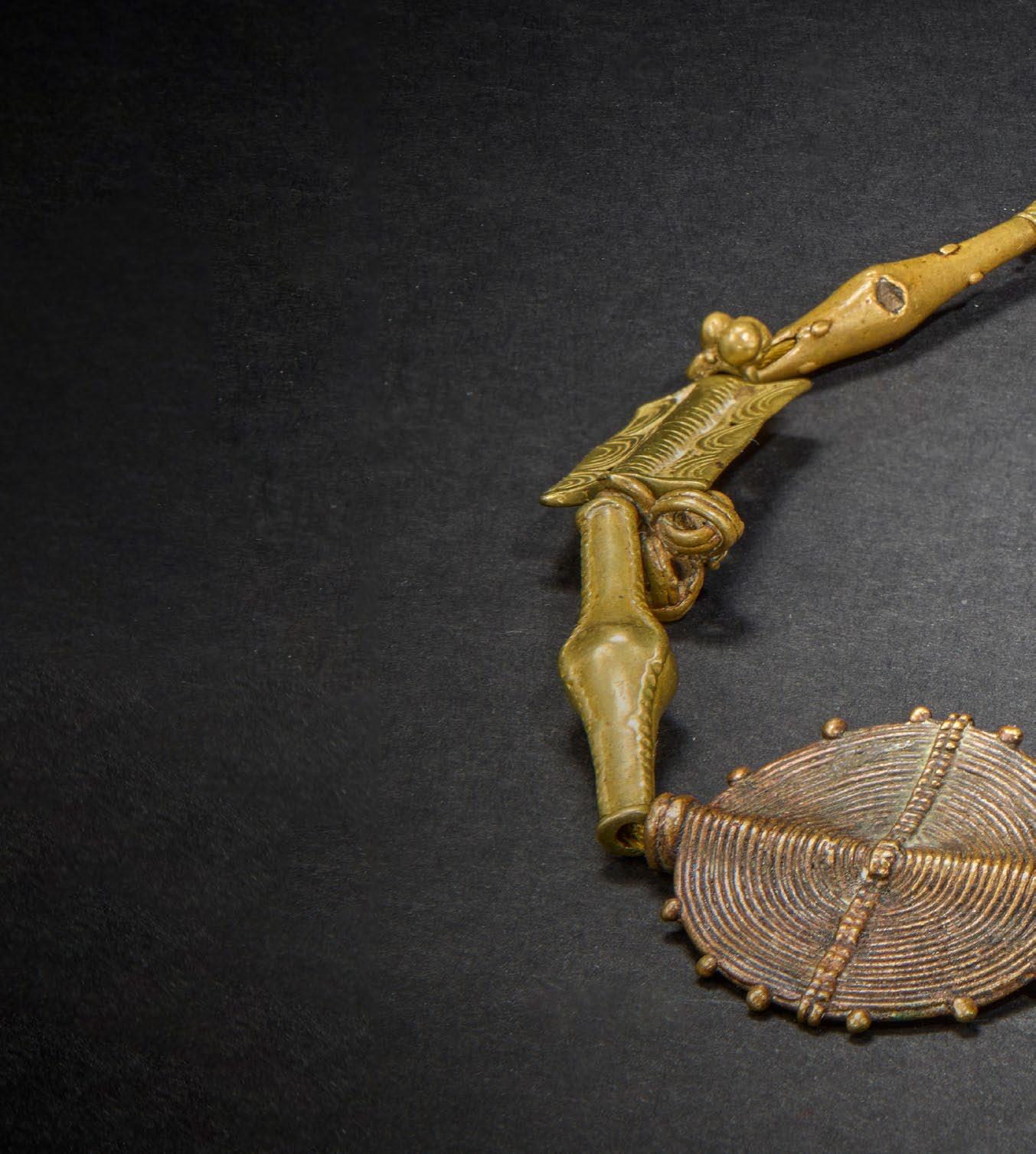
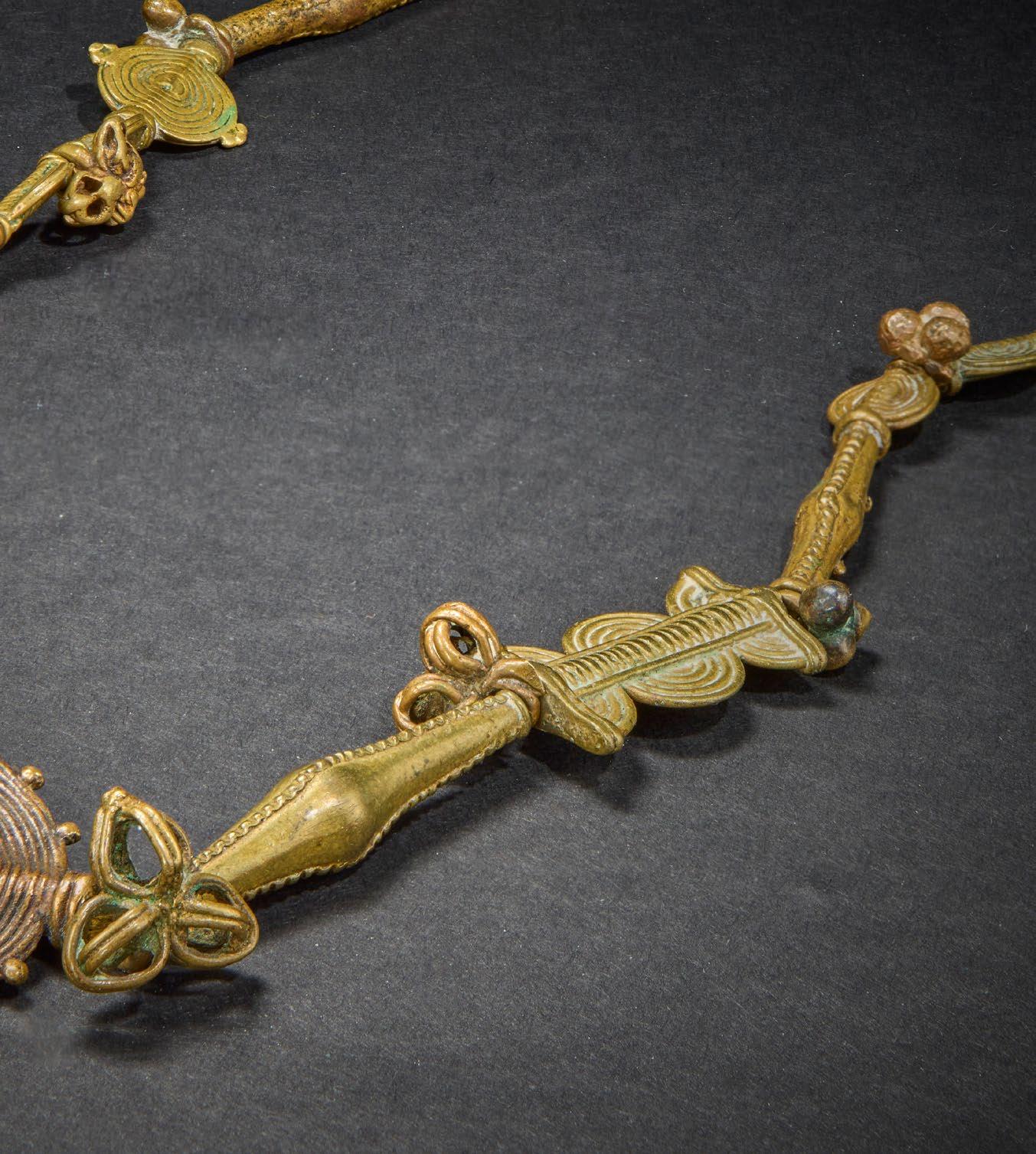

Late 19th/early 20th century Copper alloy
Diameter: 3½ in, 9 cm
PROVENANCE
Old English collection
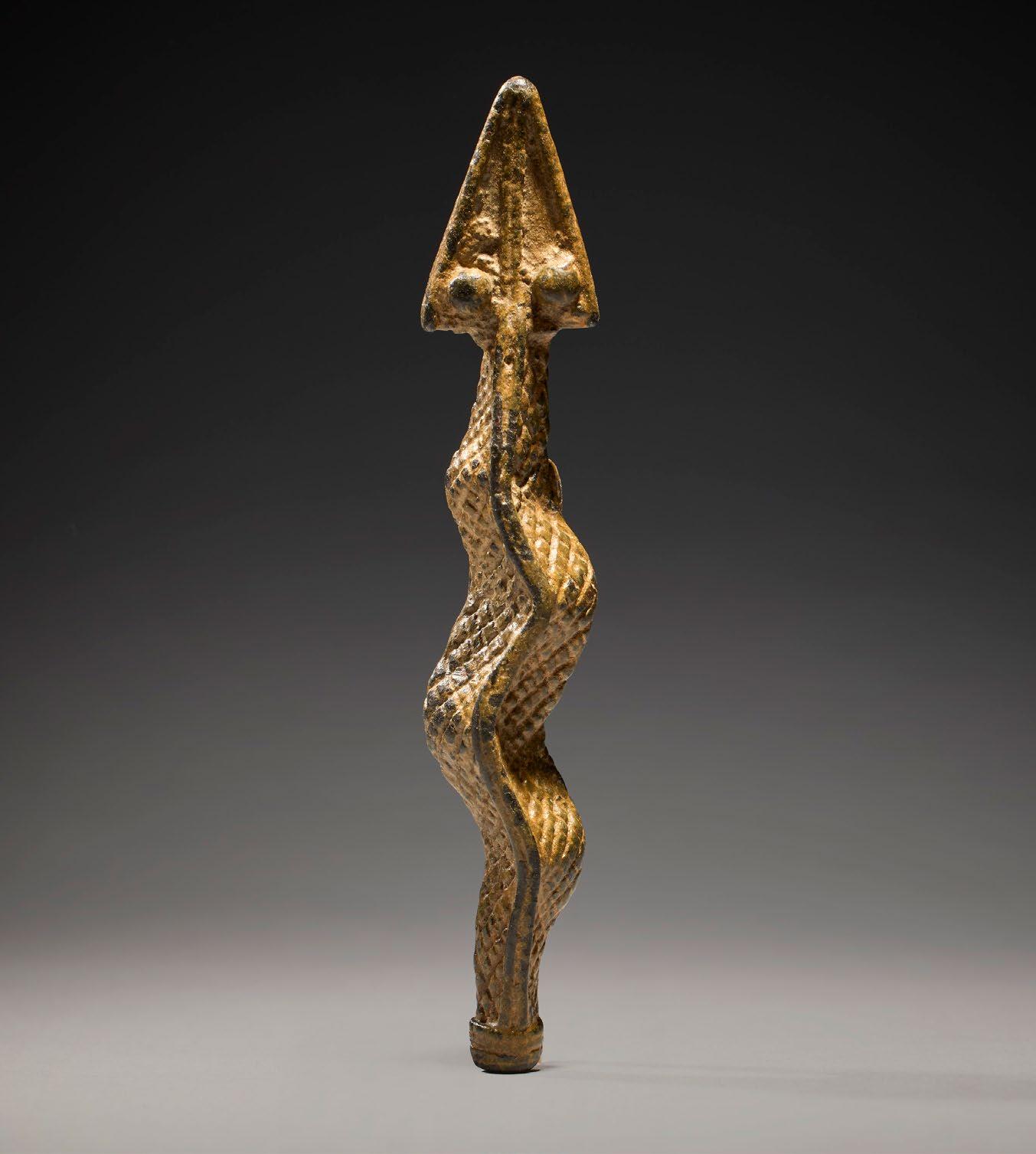
Circa 18th – 19th century
Copper alloy
Height: 3½ in, 9 cm
PROVENANCE
Private Collection, Brussels
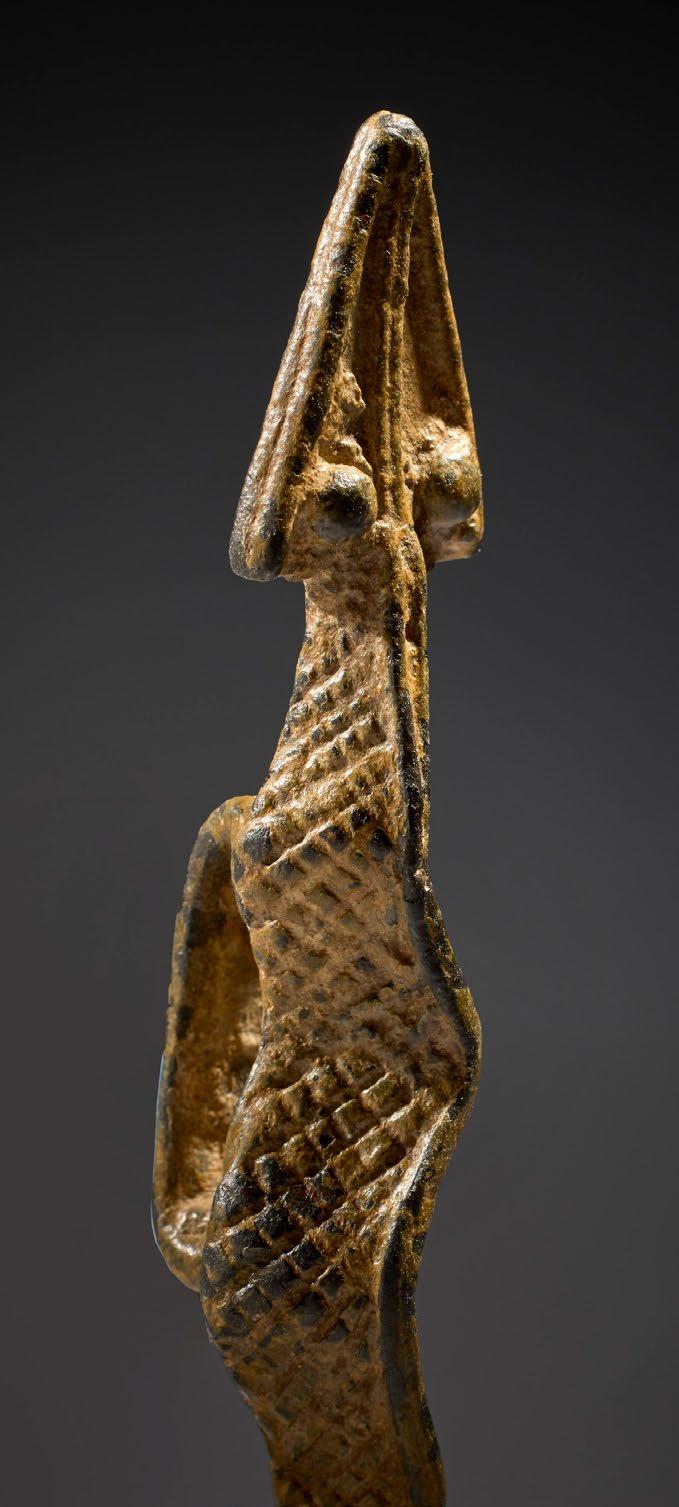

LOBI, BURKINA FASO
19th century
Bronze
Width: 2½ in, 6 cm
PROVENANCE
Gilbert Ouadrago, 1977
Private Collection, New York

LOBI OR GURUNSI, BURKINA FASO
First half 20th century
Bronze
Height: 6 in, 15 cm
PROVENANCE
Gilbert Ouadraogo
Private Collection, New York
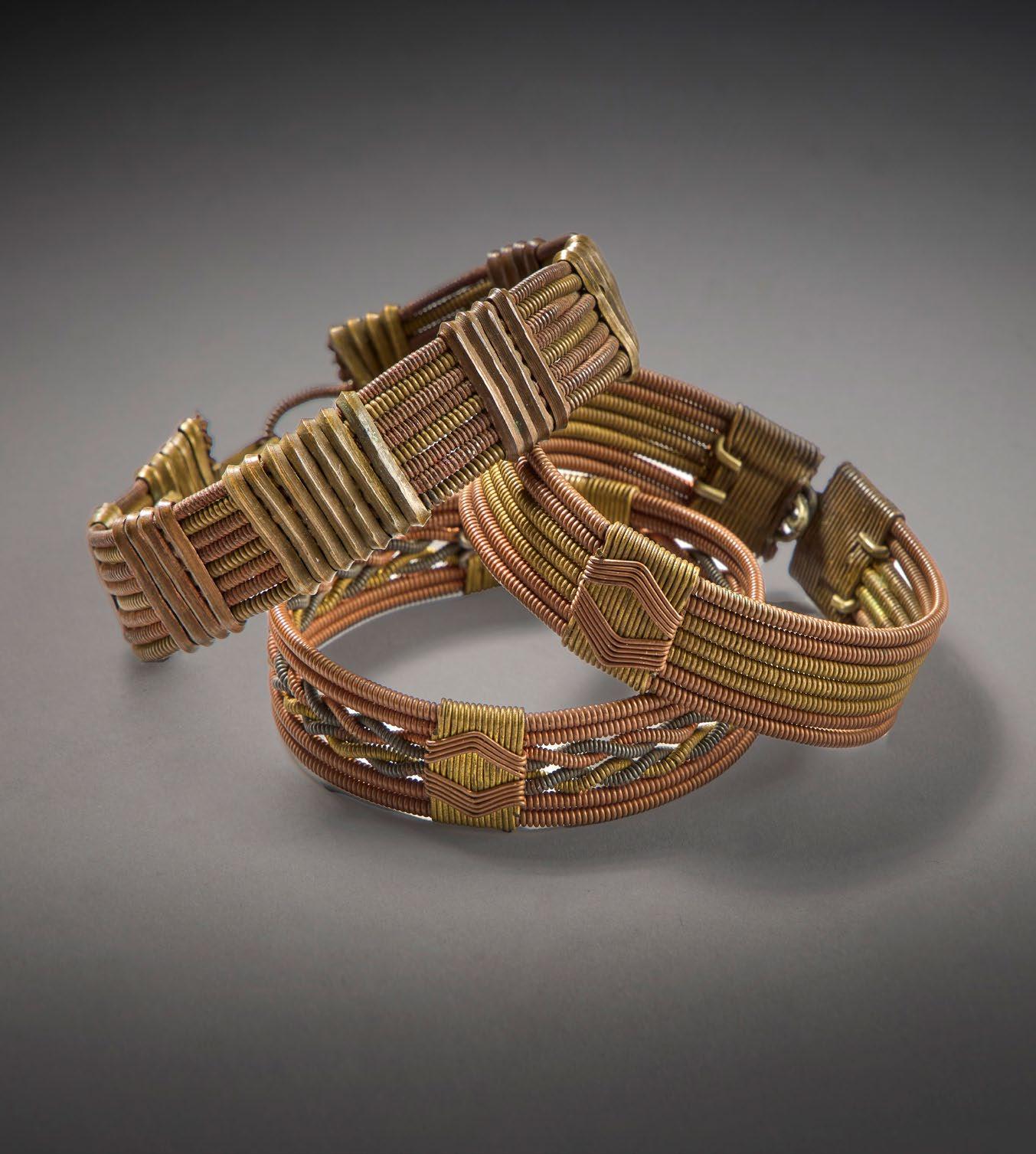
19th century
Copper alloy
Diameter: 2½ – 3 in, 6½–7 cm
PROVENANCE
Old English collection

BOBO OR TOUSSIAN, BURKINA FASO
19th century
Bronze
Length: 4 in, 10 cm
PROVENANCE
Taylor Dale, Santa Fe
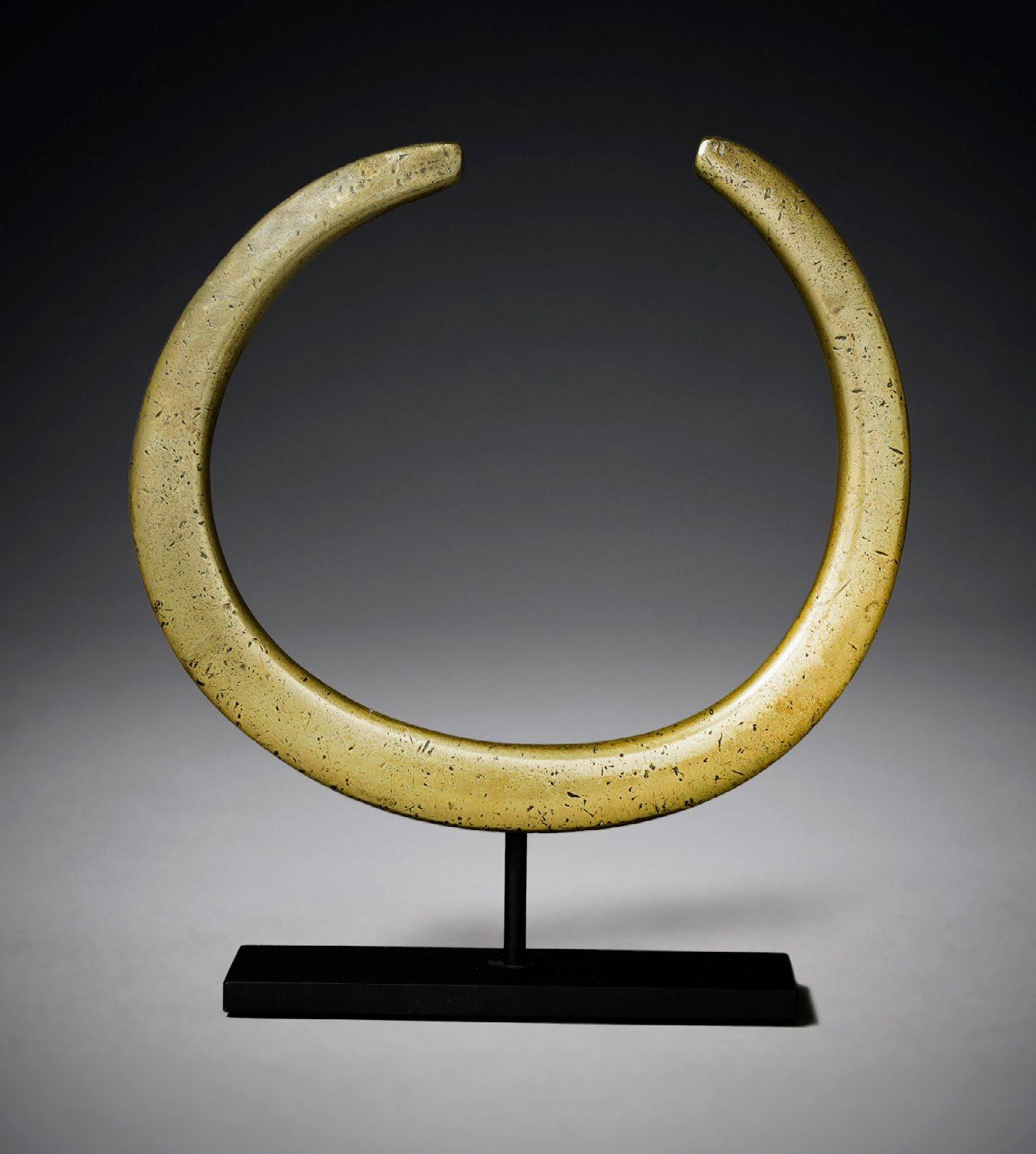
Mid–19th century
Brass
Diameter: 6½ in, 16½ cm
PROVENANCE
Jeremy Sabine, South Africa (acquired from the owner, whose grandfather had found it on his farm in the Limpopo region, South Africa)
